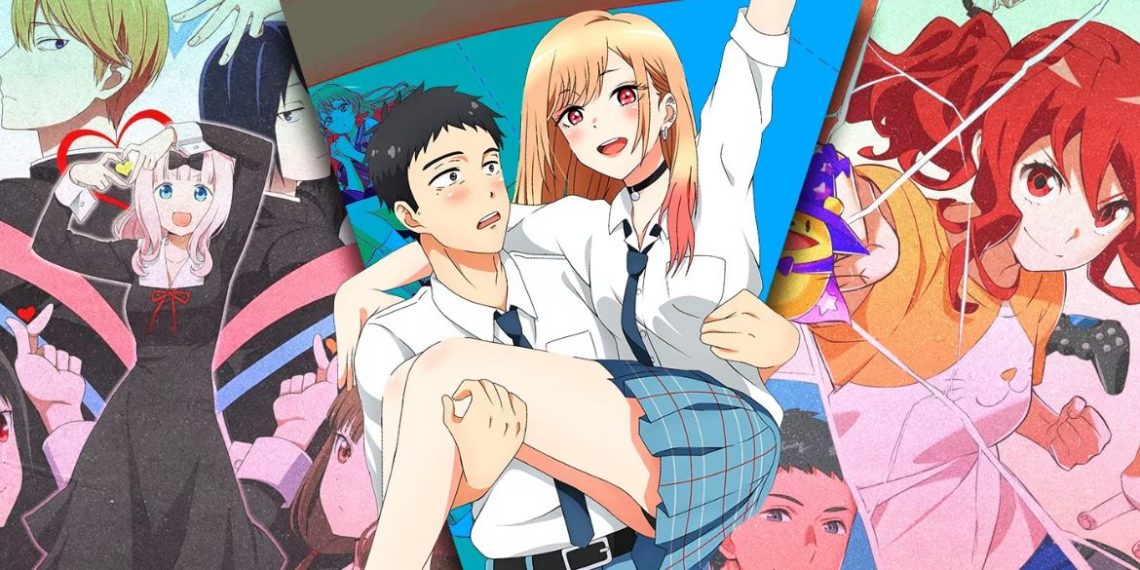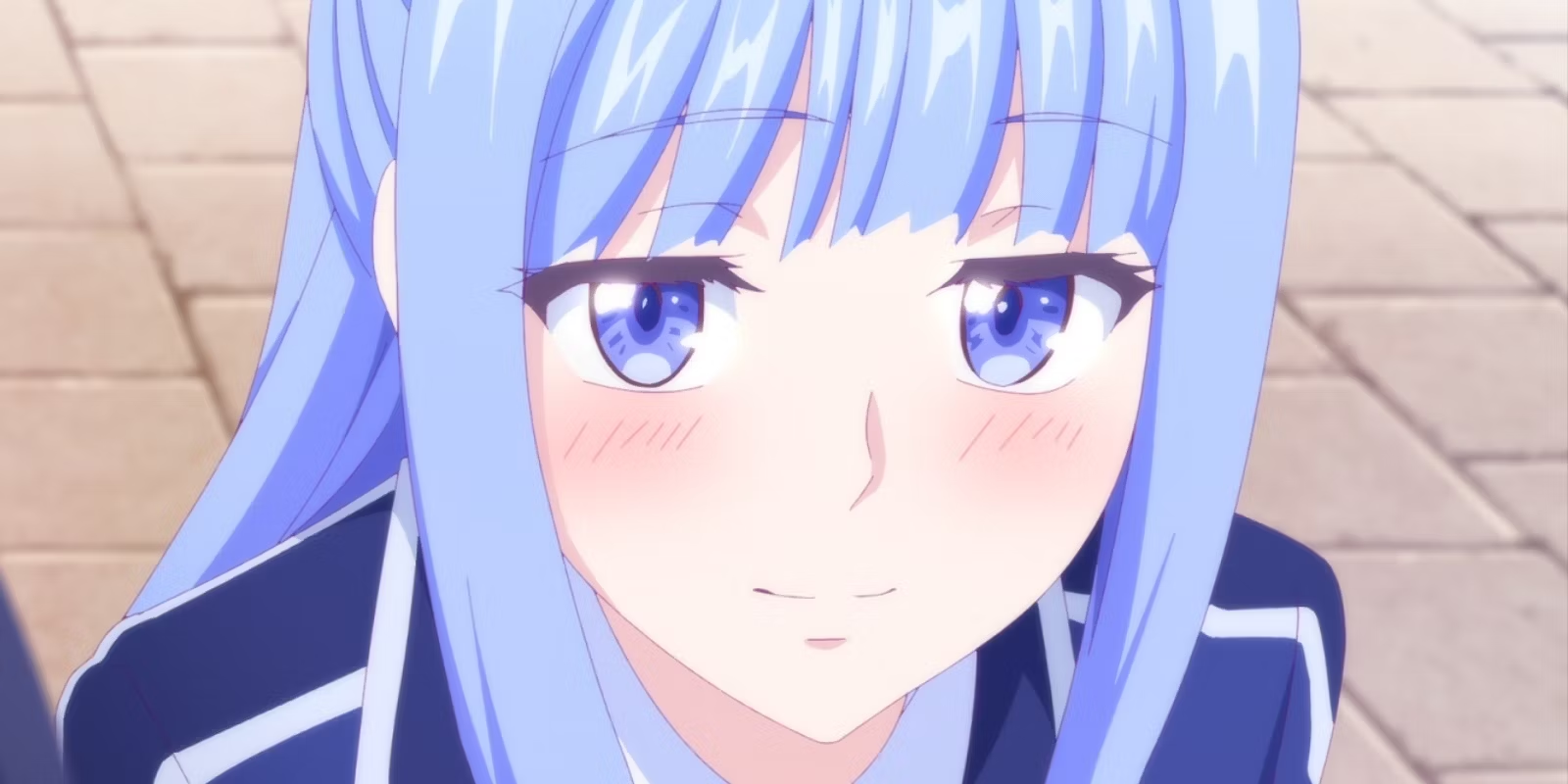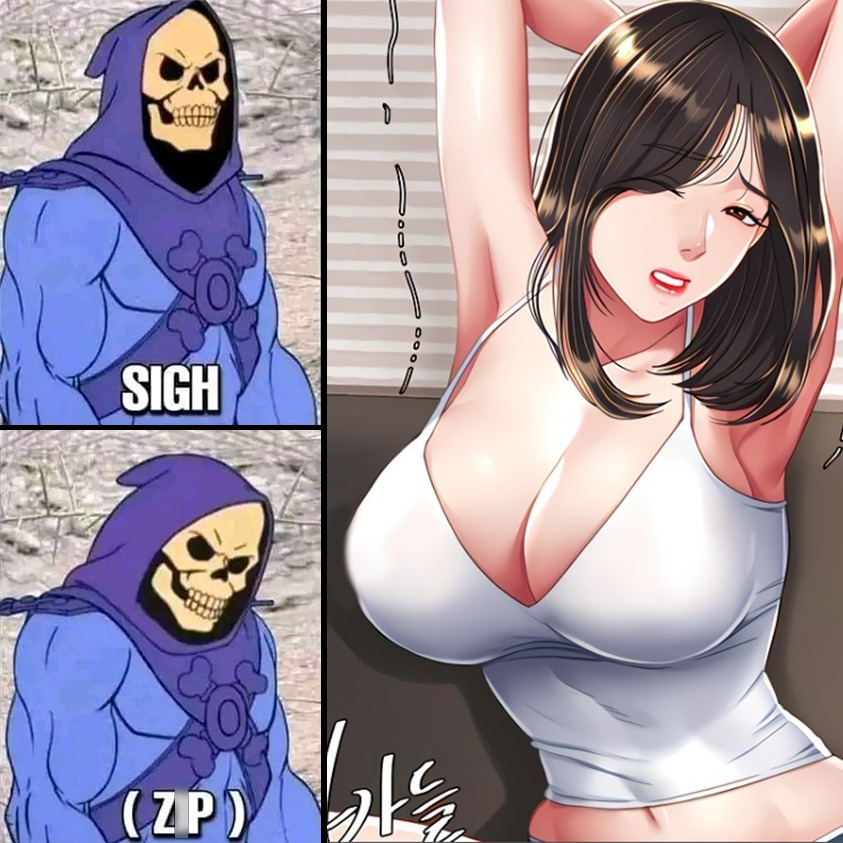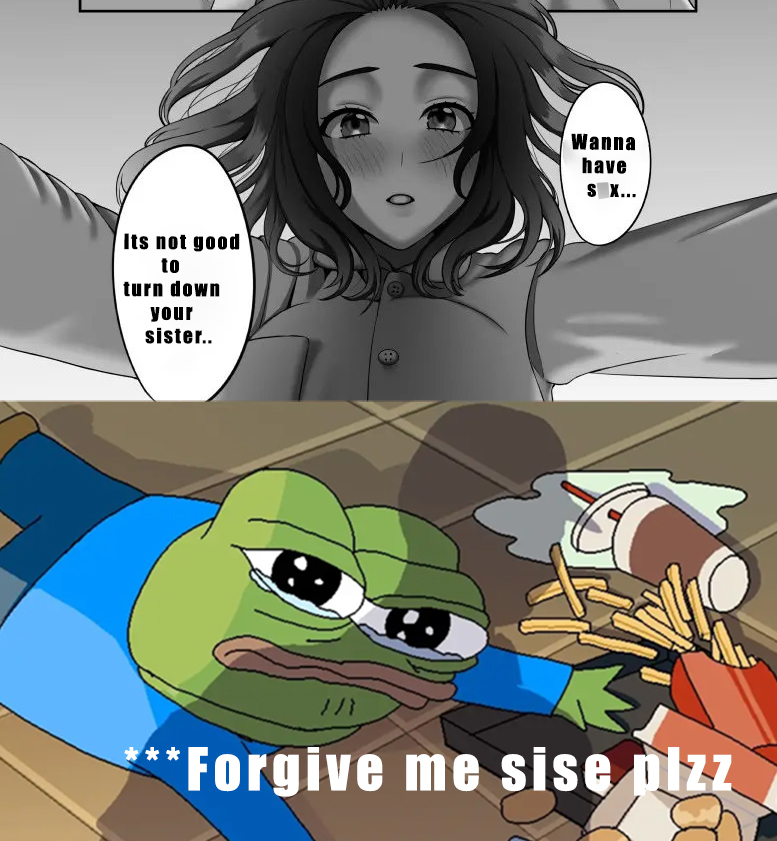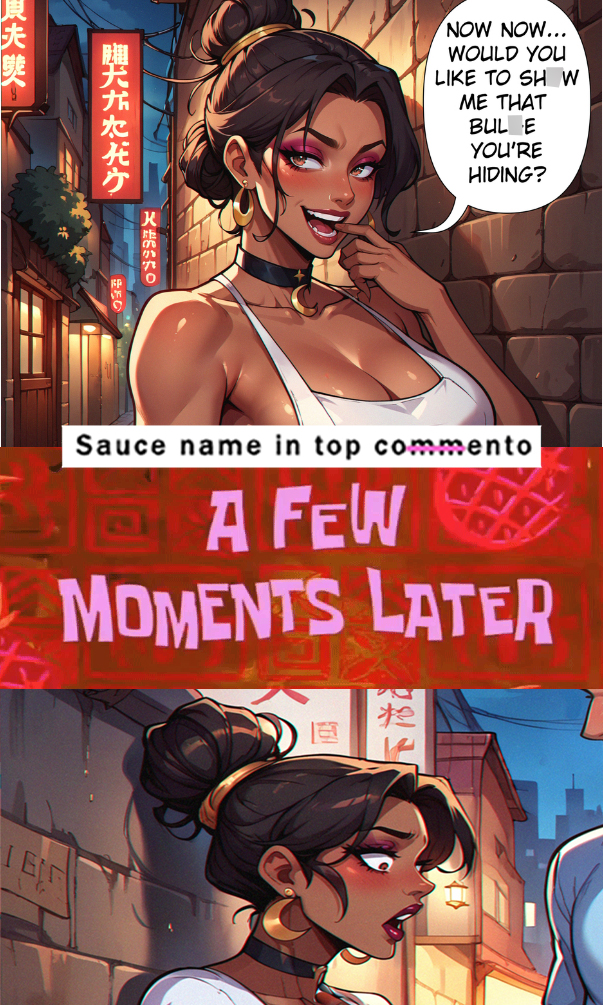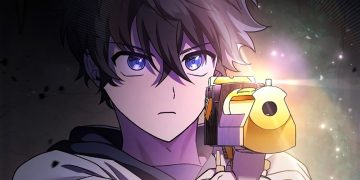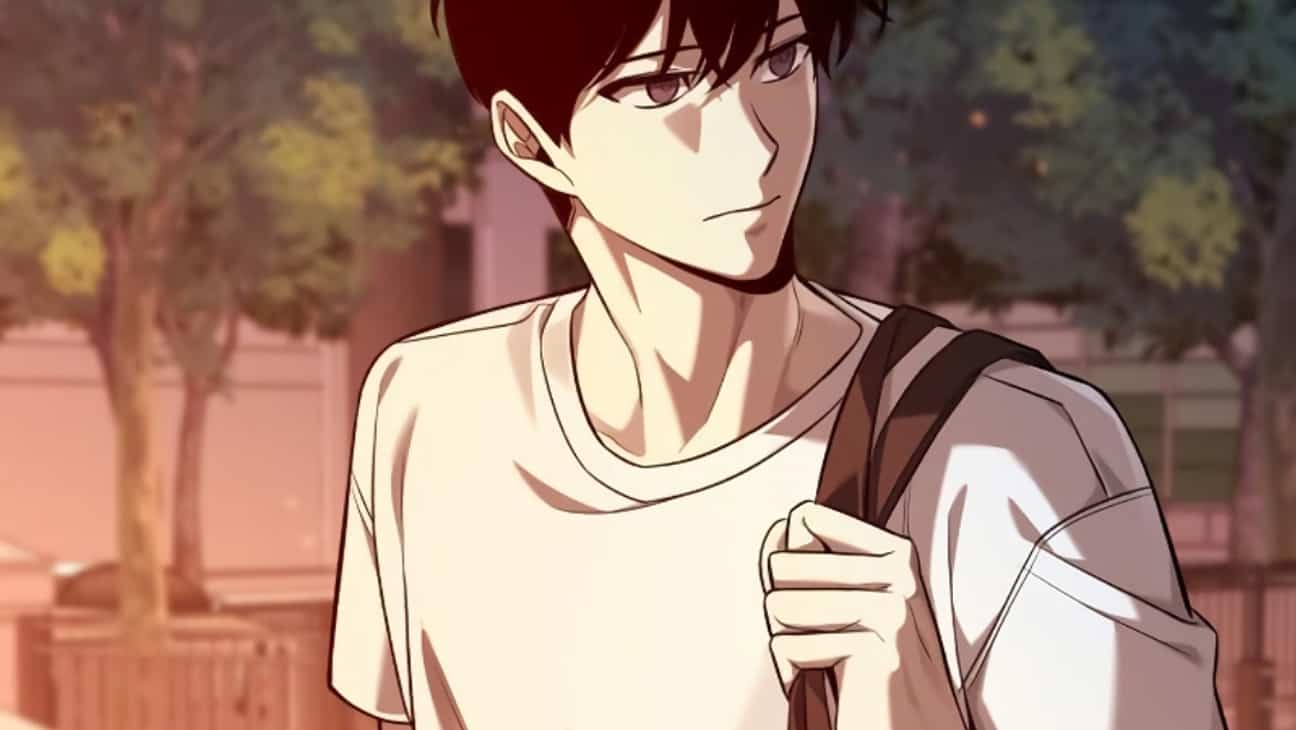Romance anime holds a special place in the hearts of fans and newcomers alike, evoking deep emotions and creating heartwarming experiences. One such gem within this genre is More than a Married Couple, but Not Lovers captures offering a refreshing twist on traditional romance dynamics.
Rather than prolonged dances of courtship, the main characters are thrust into an unconventional situation where opposites attract as they collaborate to win over their crushes in a school-sponsored marriage project.
This anime goes into the lives of couples, budding romances, and destined lovers, presenting a charming narrative filled with vibrant characters. For enthusiasts seeking similar heartfelt tales, here’s a curated selection of the best romance anime that capture the essence of More than a Married Couple, but Not Lovers.
At Jirō Yakuin’s high school, an unusual Couple Training Program, more akin to a social experiment, pairs students of the opposite sex to live together and cultivate a healthy romantic relationship. While this arrangement could be a dream come true if Jirō were matched with the charming Shiori Sakurazaka, the involuntary nature of the pairings adds a twist to the situation.
Unfortunately for Jirō, fate has a different plan, pairing him with Akari Watanabe, a popular Gyaru girl who harbors feelings for someone else entirely. Despite their conflicting personalities and intentions, they must feign affection to earn enough points to select new partners. However, even a simple kiss could be their carefully constructed facade. here is some anime if you like More Than A Married Couple, But Not Lovers.
About More Than a Married Couple, But Not Lovers
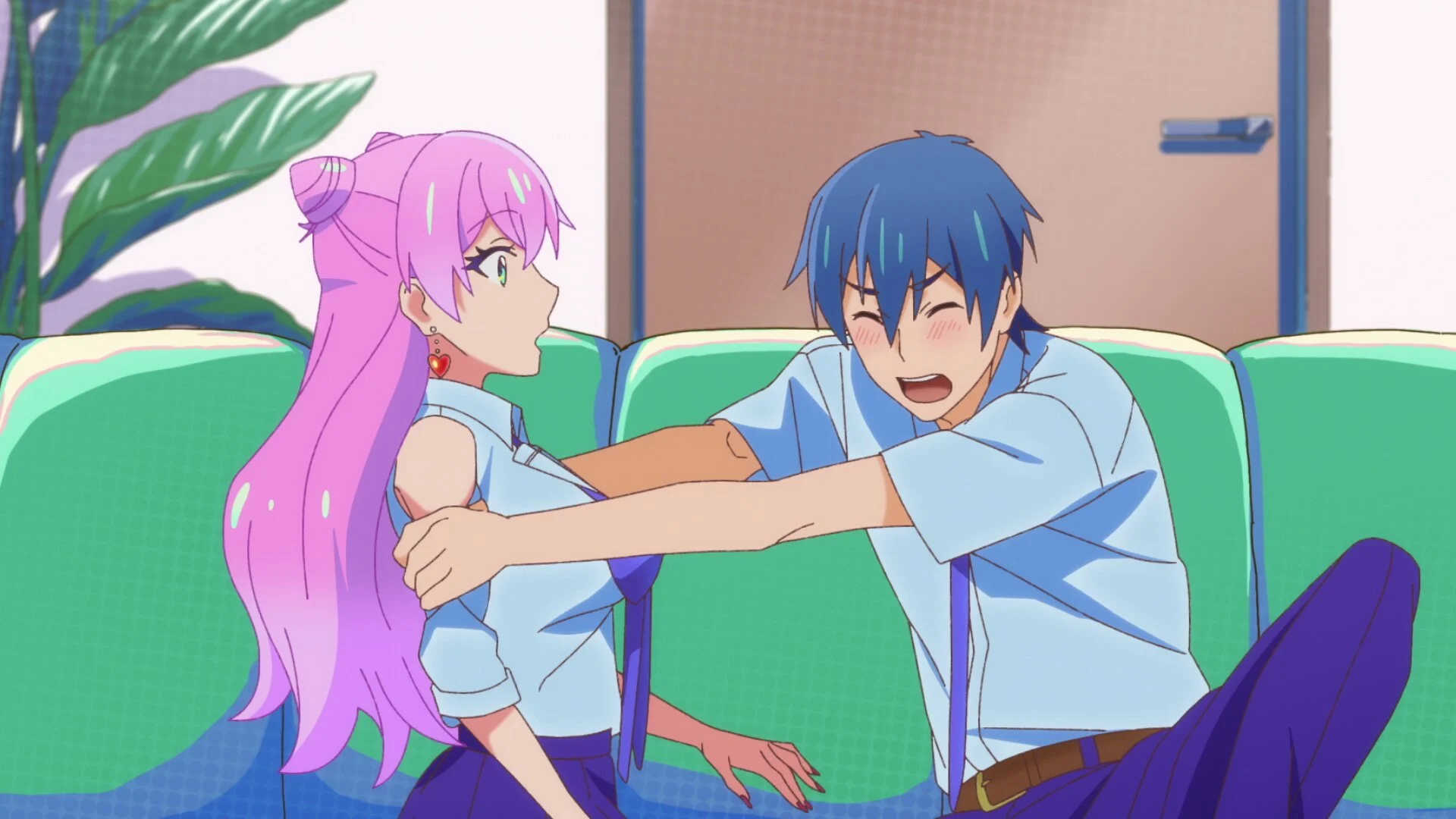
“More Than a Married Couple, But Not Lovers” (Fūfu Ijō, Koibito Miman) is a romantic comedy anime series based on the manga written by Yūki Kanamaru. The series, produced by Studio Mother, aired in the fall of 2022 and garnered attention for its unique premise and engaging character dynamics. Here’s a comprehensive review and detailed information about the series:
The story is set in a high school where students participate in a marriage practical, an unconventional school program designed to prepare them for real-life relationships. In this program, students are paired up to live together as pretend married couples, and their interactions are monitored and graded. The goal is to teach them the nuances of married life, such as cooperation, understanding, and domestic responsibilities.
The protagonist, Jirou Yakuin, is a shy and introverted student who is paired with Akari Watanabe, a popular and outgoing girl. Both Jirou and Akari harbor feelings for other people—Jirou for his childhood friend Shiori Sakurazaka, and Akari for the school’s heartthrob, Minami Tenjin.
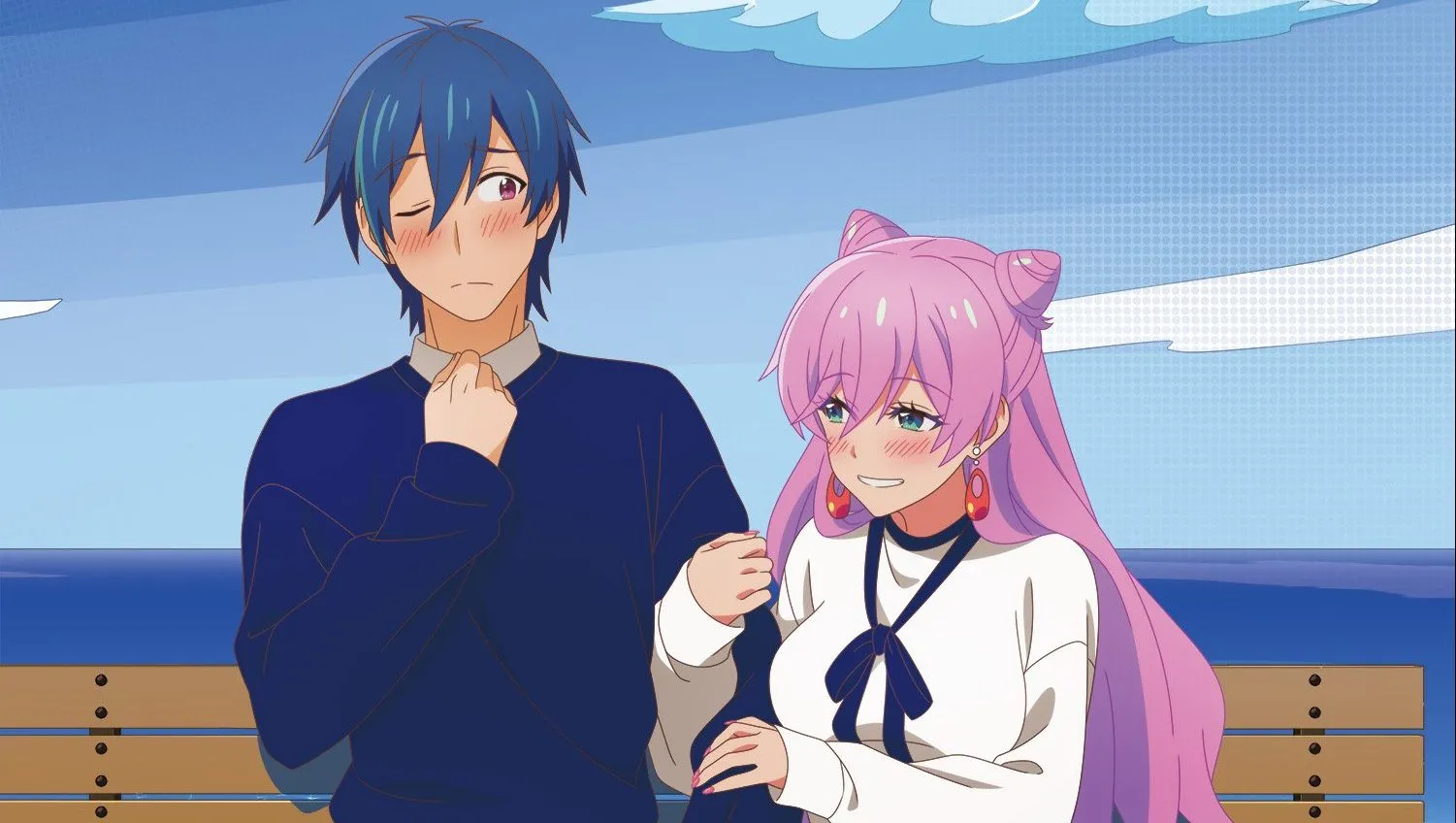
However, to score well in the program and get the opportunity to switch partners with their respective crushes, Jirou and Akari must work together and act convincingly as a married couple.
Jirou Yakuin: Jirou is an introverted and somewhat awkward teenager who finds himself struggling to adapt to the intimate nature of the marriage practical. Despite his initial reluctance and clumsiness, he gradually begins to show a caring and considerate side, especially towards Akari.
Akari Watanabe: Akari is the outgoing, assertive, and attractive girl who initially sees Jirou as a means to an end. Her character is layered with insecurities and a genuine desire for affection, which becomes more evident as she spends more time with Jirou.
Shiori Sakurazaka: Shiori is Jirou’s childhood friend and crush, who is soft-spoken and kind-hearted. Her character adds a dimension of complexity to the story as her own feelings for Jirou become more apparent, creating a love triangle.

Minami Tenjin: Minami is the school’s idol and the object of Akari’s affections. He is charismatic and kind, often seen as the perfect guy, which makes Akari’s crush on him quite understandable.
The anime explores themes of teenage love, self-discovery, and the complexities of relationships. One of the central themes is the contrast between idealized love and real companionship. As Jirou and Akari navigate their forced cohabitation, they confront their preconceived notions about their respective crushes and begin to appreciate the person in front of them.
The dynamic between Jirou and Akari evolves from one of convenience and mutual goal-achieving to genuine care and affection. This gradual development is portrayed with a mix of humor and heartfelt moments, providing a balanced narrative that keeps the audience engaged.
Studio Mother’s animation style is vibrant and expressive, effectively capturing the various moods and comedic elements of the series. The character designs are attractive and distinct, with Akari’s lively demeanor and Jirou’s more subdued appearance complementing their personalities well. The backgrounds and settings, while not overly detailed, are sufficient to create an immersive high school environment.
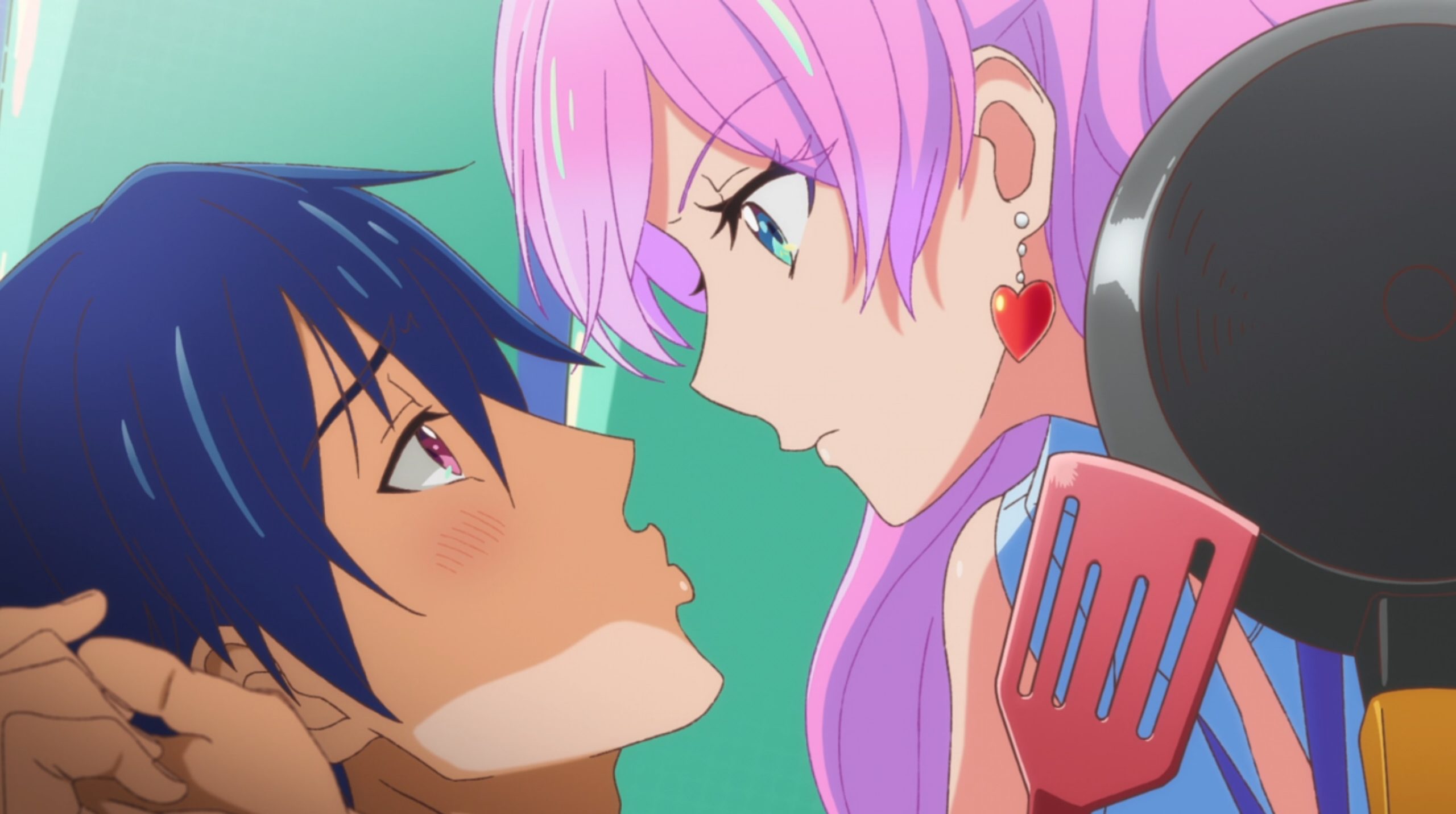
The soundtrack of “More Than a Married Couple, But Not Lovers” complements its light-hearted and romantic atmosphere. The opening and ending themes are catchy and reflect the youthful energy of the series.
The voice acting is commendable, with the seiyuu bringing out the nuances of their characters effectively. Notably, Saori Ōnishi (Akari) and Seiichirō Yamashita (Jirou) deliver performances that add depth to their characters’ growth and interactions.
“More Than a Married Couple, But Not Lovers” received positive feedback for its fresh take on the romantic comedy genre. The unusual setup of a marriage practical allowed for creative storytelling that deviated from typical high school romance tropes. Viewers appreciated the character development and the evolving relationship between the protagonists.

Critically, the series was praised for its humor, character dynamics, and emotional moments. Some critiques pointed out the predictability of certain plot points and the reliance on common romantic comedy clichés. However, these aspects did not significantly detract from the enjoyment of the series.
“More Than a Married Couple, But Not Lovers” is a charming and entertaining series that stands out in the crowded genre of high school romances. Its unique premise, coupled with well-developed characters and a balance of comedy and romance, makes it a delightful watch. For fans of romantic comedies looking for a series that offers both laughs and heartfelt moments, this anime is a worthwhile addition to their watchlist.
10. Toradora
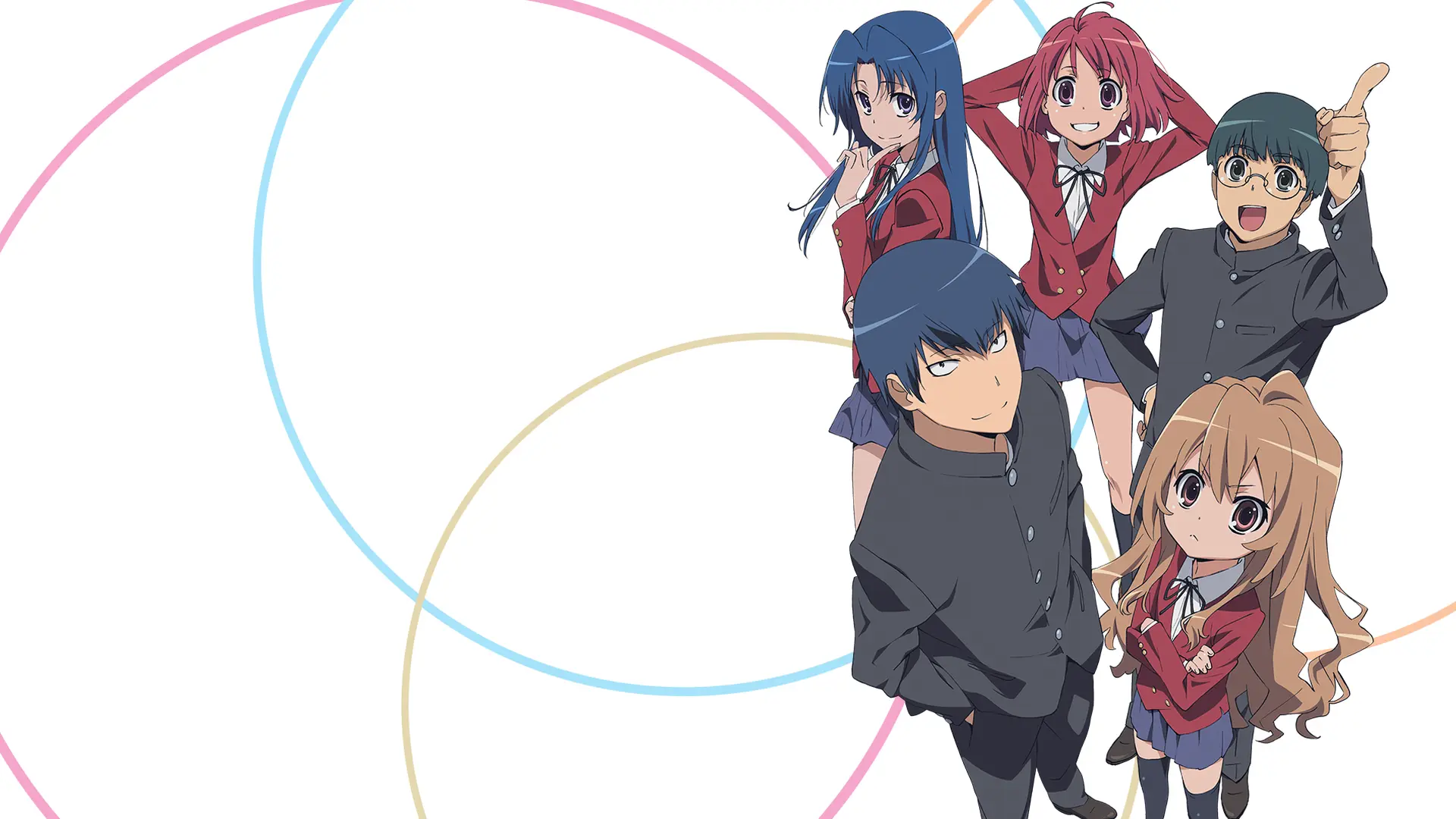
Toradora is a beloved rom-com classic that looks into the complexities of high school romance. Ryuuji, a gentle loner with an intimidating appearance, finds his life turned upside down when he crosses paths with Taiga, known as the Palmtop Tiger. What begins as a tumultuous alliance gradually evolves into something deeper.
Renowned among hardcore romance anime enthusiasts, Toradora offers an engaging storyline that deftly subverts typical romance clichés. Viewers are drawn to the dynamic chemistry between the two main characters and the whirlwind of antics that ensue as they navigate their separate journeys toward love.

9. Love, Chuunibyou, And Other Delusions!

Rikka and Yuuta make for an unconventional duo, each with their own eccentricities. While Yuuta strives to shed his childish delusions and embrace a fresh start in high school, Rikka remains firmly entrenched in her fantastical world.
Once a victim of middle school syndrome, Yuuta is determined to distance himself from his cringe-worthy past. However, his plans are disrupted when Rikka, another first-year student plagued by the same delusions, crosses his path. Despite their differences, the two took on a series of misadventures that blur the lines between friendship and something more.
Fans of character dynamics akin to More than a Married Couple, but not Lovers will find plenty to enjoy in this series, where hijinks abound and unexpected connections blossom.
“Toradora!” is a popular romantic comedy anime series based on the light novel series written by Yuyuko Takemiya and illustrated by Yasu. The anime, produced by J.C. Staff, originally aired from October 2008 to March 2009. It has since garnered a significant following and is widely regarded as one of the quintessential high school romance series. Here’s a detailed review and comprehensive information about “Toradora!”:
“Toradora!” centers around the lives of two high school students, Ryuuji Takasu and Taiga Aisaka. Ryuuji is a kind-hearted boy with an intimidating face that often causes misunderstandings about his personality. Taiga, on the other hand, is a small but fierce girl, known as the “Palmtop Tiger” due to her aggressive demeanor despite her diminutive stature.
The story begins with a series of misunderstandings that lead Ryuuji and Taiga to discover they each have a crush on the other’s best friend—Ryuuji likes Taiga’s best friend, Minori Kushieda, and Taiga likes Ryuuji’s best friend, Yuusaku Kitamura.
In a bid to help each other get closer to their respective crushes, they form an unlikely alliance. As they spend more time together, their friendship deepens, and they begin to develop feelings for each other, complicating their original plans.
Ryuuji Takasu: Ryuuji is the protagonist who, despite his fierce appearance, is gentle, responsible, and has a knack for household chores. His character is characterized by his patience and empathy, often taking care of Taiga and his single mother, Yasuko.
Taiga Aisaka: Taiga is the female lead known for her short temper and small stature. Despite her tough exterior, she is vulnerable and lonely due to her strained family relationships. Taiga’s character arc revolves around her learning to express her true feelings and relying on others.
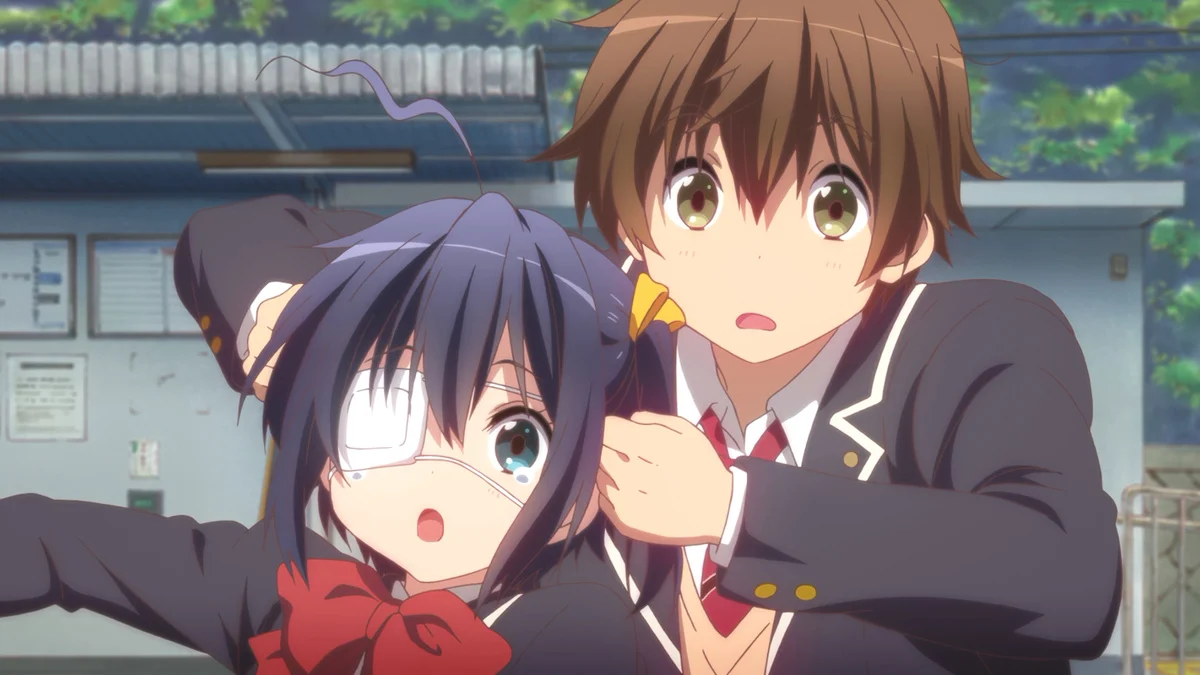
Minori Kushieda: Minori is Ryuuji’s energetic and optimistic crush, who is also Taiga’s best friend. She is hardworking and has a complex personality, hiding her own insecurities behind a cheerful facade.
Yuusaku Kitamura: Yuusaku is Ryuuji’s best friend and the vice president of the student council. He is cheerful, reliable, and initially oblivious to Taiga’s feelings for him.
Ami Kawashima Ami is a beautiful and popular model who transfers to Ryuuji and Taiga’s school. She initially presents herself as sweet and innocent but reveals a more manipulative and perceptive side. Her interactions with Ryuuji and Taiga add depth to the story, challenging their relationships.
“Toradora!” excels in exploring themes of love, friendship, and personal growth. It goes into the complexities of teenage emotions and relationships, portraying them with a blend of humor and seriousness. The series emphasizes the idea that people are often more than they appear to be, as seen through Ryuuji’s misunderstood demeanor and Taiga’s tough exterior hiding her vulnerabilities.
The relationship between Ryuuji and Taiga evolves naturally over the course of the series. Initially united by mutual interests, their bond deepens through shared experiences and emotional support. The series skillfully navigates their transition from friends to romantic partners, making their journey believable and heartfelt.
J.C. Staff’s animation in “Toradora!” is vibrant and expressive, capturing the emotional highs and lows of the characters. The art style is appealing, with character designs that are distinctive and memorable. The animation effectively conveys physical comedy and emotional moments, enhancing the storytelling.
The soundtrack of “Toradora!” is composed by Yukari Hashimoto and complements the series’ tone perfectly. The opening themes, “Pre-Parade” and “Silky Heart,” and the ending themes, “Vanilla Salt” and “Orange,” are catchy and reflect the energetic and emotional aspects of the series.
The voice acting is a standout feature, with Rie Kugimiya (Taiga) and Junji Majima (Ryuuji) delivering exceptional performances. Kugimiya’s portrayal of Taiga captures her fiery spirit and vulnerability, while Majima’s Ryuuji conveys warmth and sincerity. The supporting cast, including Yui Horie (Minori), Hirofumi Nojima (Yuusaku), and Eri Kitamura (Ami), also contribute significantly to the series’ emotional depth.
“Toradora!” received widespread acclaim for its engaging story, well-developed characters, and emotional depth. It is often cited as a standout example of the romantic comedy genre in anime. Critics and fans praised its ability to balance humor and drama, creating a relatable and compelling narrative.
The series has had a lasting impact, influencing subsequent high school romance anime. Its exploration of complex relationships and character growth continues to resonate with audiences. “Toradora!” is frequently recommended to newcomers to anime and remains a beloved series among long-time fans.
“Toradora!” is a masterful blend of comedy, romance, and drama, making it a timeless piece in the anime landscape. Its endearing characters, heartfelt story, and emotional depth ensure its place as a classic. Whether you’re a fan of romantic comedies or looking for a series with genuine character development and emotional resonance, “Toradora!” is a must-watch.
8. My Dress-up Darling
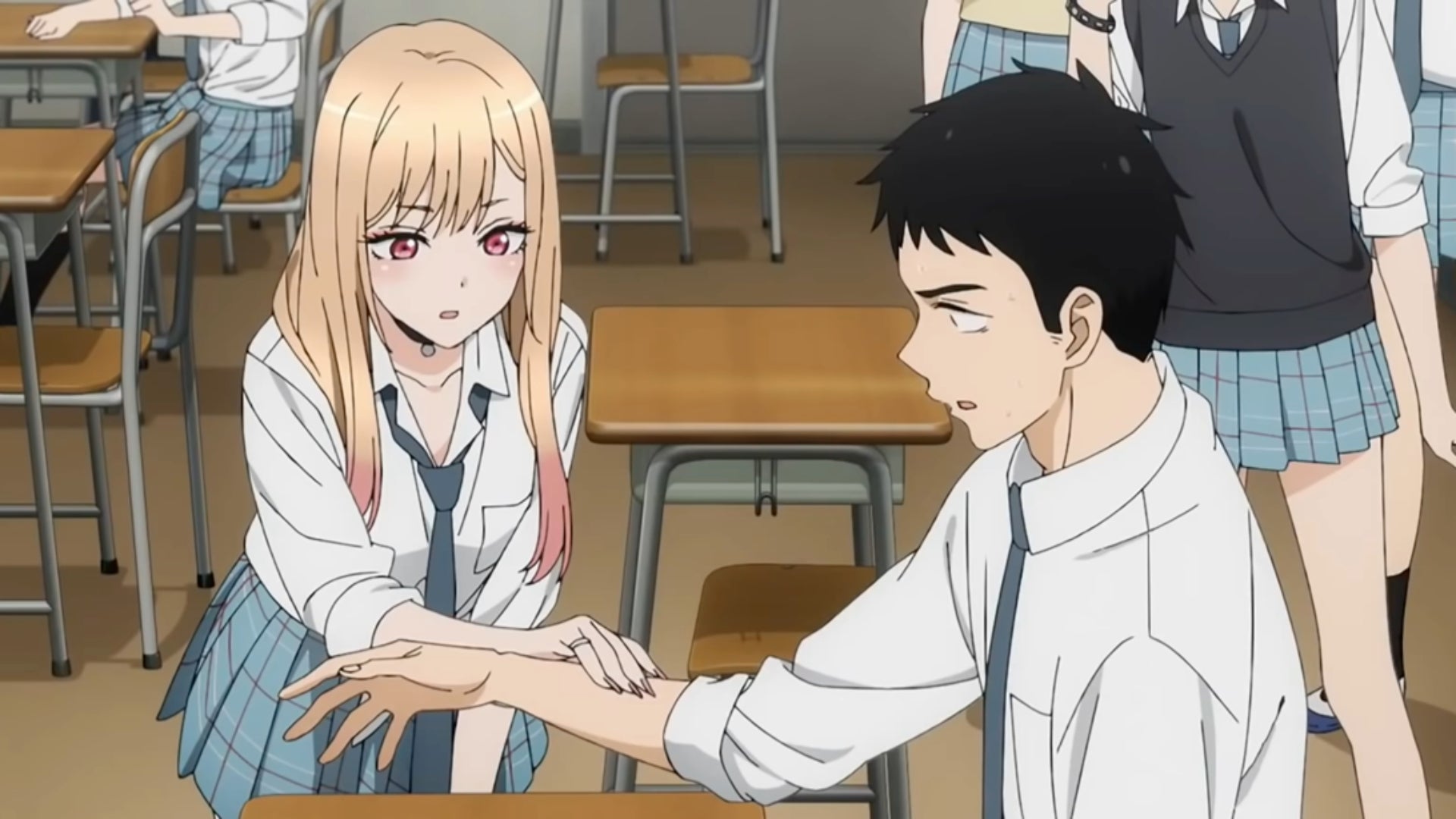
My Dress-up Darling took the anime community by surprise, offering a heartwarming tale of opposites attracting. Gojoun, a reserved loner with a passion for Hina dolls, keeps his hobby hidden away. However, his world is shaken when Marin Kitagawa, a popular second-year student, bursts into his life, introducing him to the vibrant realms of anime and cosplay.
As Marin pulls Gojou into her chaotic yet fascinating world, he finds himself designing an entire costume for her, marking the beginning of a unique bond. For the first time, Gojou experiences genuine connection and camaraderie. The chemistry between Marin and Gojou resonates with fans of More than a Married Couple, but not Lovers, capturing the essence of their evolving relationship.
“My Dress-Up Darling” (Sono Bisque Doll wa Koi wo Suru) is a romantic comedy anime that has garnered significant attention and praise for its unique premise, endearing characters, and beautiful animation.
The series is based on the manga written and illustrated by Shinichi Fukuda, which has been serialized in Young Gangan since 2018. The anime adaptation, produced by CloverWorks, aired from January to March 2022. Here’s a comprehensive review and detailed information about “My Dress-Up Darling”:
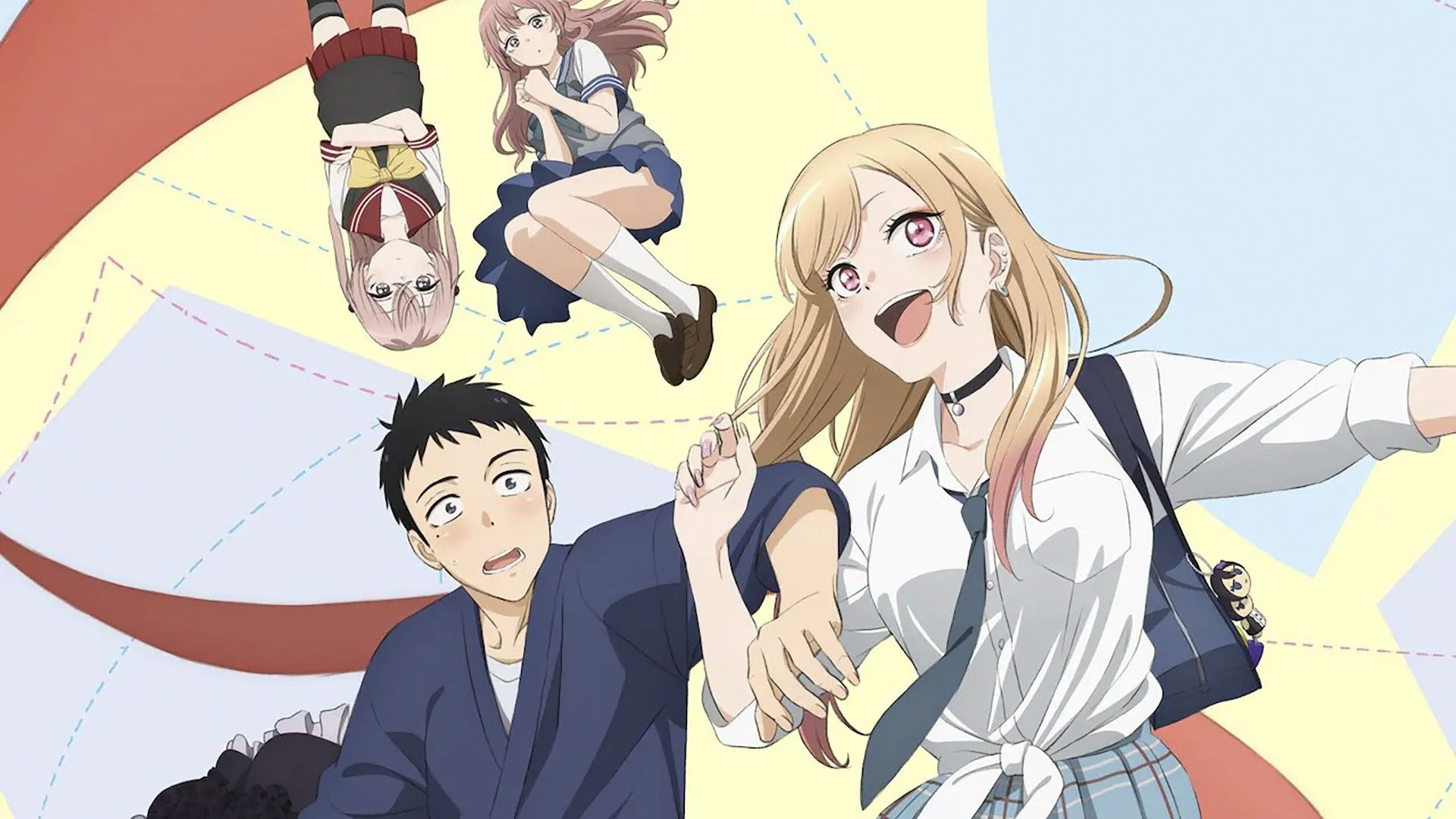
“My Dress-Up Darling” revolves around Wakana Gojo, a high school student who is passionate about crafting traditional Japanese hina dolls. Despite his skill and dedication, Wakana keeps his hobby a secret due to a traumatic childhood experience where he was ridiculed by a friend for his interest in dolls. Consequently, he becomes reclusive and withdrawn, focusing solely on perfecting his craft.
Wakana’s life takes an unexpected turn when he encounters Marin Kitagawa, a popular and outgoing classmate with a vibrant personality. Marin is an avid fan of anime, manga, and video games, and she harbors a deep love for cosplay.
However, despite her enthusiasm, Marin lacks the skills to create her own costumes. Upon discovering Wakana’s sewing abilities, she eagerly enlists his help to bring her favorite characters to life through cosplay.
Wakana Gojo: Wakana is the male protagonist who is initially shy and introverted due to his past experiences. He is highly skilled in sewing and deeply passionate about hina dolls, aspiring to become a professional doll maker. Wakana’s character arc focuses on overcoming his insecurities and finding confidence through his interactions with Marin.
Marin Kitagawa: Marin is the female lead, characterized by her infectious enthusiasm, confidence, and bold fashion sense. She is unapologetically passionate about her hobbies and embraces her interests without concern for societal judgments. Marin’s vibrant personality and unwavering support play a crucial role in helping Wakana open up and embrace his talents.
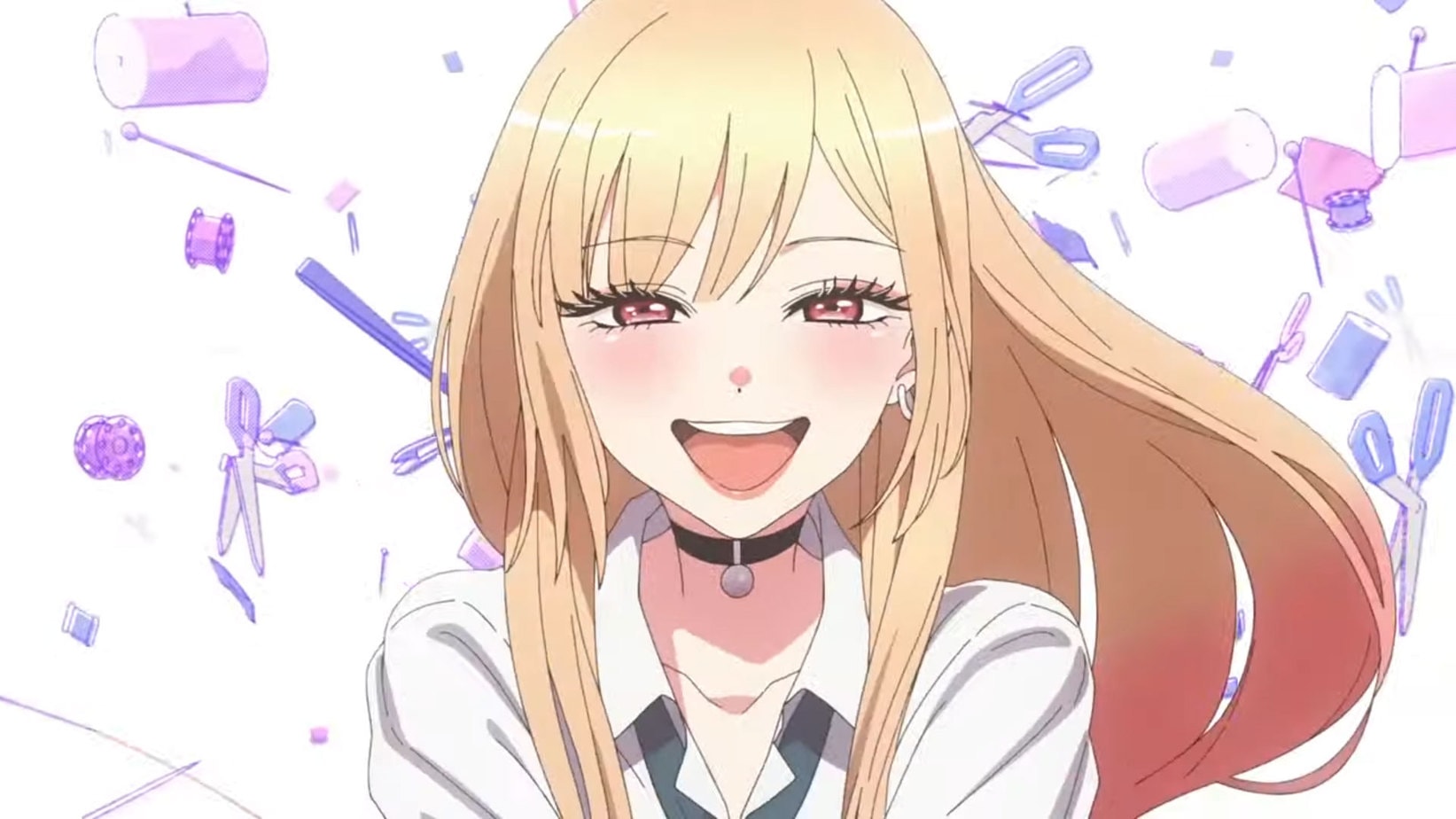
“My Dress-Up Darling” explores themes of self-acceptance, personal growth, and the importance of pursuing one’s passions. The series emphasizes that hobbies and interests, no matter how unconventional, should be celebrated and embraced. It also goes into the world of cosplay, highlighting the dedication and creativity involved in bringing fictional characters to life.
The dynamic between Wakana and Marin is the heart of the series. Their relationship is characterized by mutual respect and admiration, as they support and inspire each other to pursue their dreams. Wakana’s meticulous craftsmanship and Marin’s infectious enthusiasm create a compelling synergy that drives the narrative forward.
The series balances humor, romance, and heartfelt moments effectively. The comedic elements often stem from Wakana’s reactions to Marin’s boldness and the various cosplay scenarios they encounter. Meanwhile, the romantic tension between them builds gradually, offering a satisfying blend of sweet and genuine moments.
CloverWorks’ animation in “My Dress-Up Darling” is exceptional, bringing the characters and their world to life with vivid detail and fluid motion. The character designs are striking, particularly Marin’s various cosplay outfits, which are crafted with attention to detail that reflects the intricacies of real-life cosplay.
The animation studio’s commitment to capturing the essence of each cosplay is evident in the careful rendering of fabrics, accessories, and makeup. The vibrant color palette and expressive character animations enhance the viewing experience, making the series visually engaging and aesthetically pleasing.
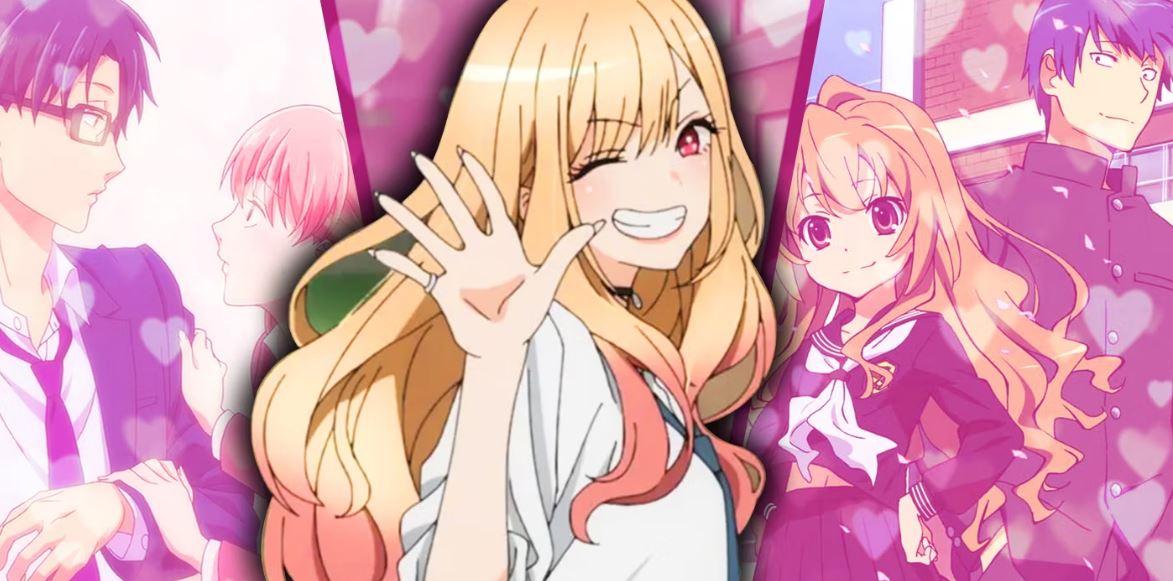
The soundtrack of “My Dress-Up Darling,” composed by Takeshi Nakatsuka, complements the series’ light-hearted and emotional tones. The opening theme “Sansan Days” by Spira Spica and the ending theme “Koi no Yukue” by Akari Akase are catchy and reflect the energetic and romantic aspects of the show.
The voice acting is another highlight, with Shoya Ishige voicing Wakana and Hina Suguta voicing Marin. Ishige captures Wakana’s reserved nature and gradual confidence growth, while Suguta brings Marin’s lively and supportive personality to life. Their chemistry and performances add depth to the characters, making their interactions believable and engaging.
“My Dress-Up Darling” has been well-received by both critics and audiences for its refreshing take on the romantic comedy genre. It has been praised for its character development, animation quality, and the positive portrayal of cosplay culture. The series resonates with viewers who appreciate the celebration of unique hobbies and the message of embracing one’s true self.
The anime has also sparked an increased interest in cosplay within the anime community, with many fans inspired to create their own costumes and explore the craft. The success of the series has led to an expanded fan base for the original manga, boosting its popularity and readership.
“My Dress-Up Darling” is a delightful and heartwarming anime that stands out for its unique premise, charming characters, and stunning animation. It successfully blends humor, romance, and personal growth into a narrative that celebrates individuality and creative expression.
Whether you’re a fan of romantic comedies, cosplay, or simply enjoy well-crafted character-driven stories, “My Dress-Up Darling” is a must-watch. Its positive messages and engaging storyline ensure it will remain a beloved series for years to come.
7. I’m The Villainess, So I’m Taming The Final Boss
This recent Isekai Romance has also begun its journey, offering a blend of supernatural elements reminiscent of More Than A Married Couple, But Not Lovers. While the plot looks into the realm of fantasy, the dynamics between the characters echo certain similarities to Jirō Yakuin’s situation. After all, navigating the complexities of love for convenience can be quite tricky.
Aileen Dautriche finds herself reincarnated into one of her beloved video games, only to be swiftly ousted from her intended arrangement with her then-fiancé, Prince Cedric, who promptly proposes to another girl. Quick to recover, Aileen seizes the opportunity to latch onto the next available option: Cedric’s brother, the Demon Lord Claude. Thus begins a tumultuous dance between the two competing couples, fraught with twists and turns.
“I’m the Villainess, So I’m Taming the Final Boss” (Akuyaku Reijou Nanode Last Boss wo Kattemimashita) is an engaging isekai fantasy romance anime that blends humor, intrigue, and romance with a unique twist on the popular “villainess” subgenre.
Based on the light novel series written by Sarasa Nagase and illustrated by Mai Murasaki, the anime adaptation was produced by Maho Film and aired in 2022. Here is a comprehensive review and detailed information about the series:
The story follows Aileen Lauren Dautriche, a young woman who regains memories of her past life after being publicly humiliated and rejected by her fiancé, Prince Cedric, in favor of the protagonist, Lilia. Aileen realizes that she is reincarnated as the villainess in an otome game she used to play, destined to meet a tragic end.
Determined to change her fate, Aileen sets out to win the heart of the game’s “Final Boss,” Claude Jean Ellmeyer, the Demon King, believing that securing his affection will save her from her doomed destiny.
Aileen Lauren Dautriche: Aileen is the protagonist who, upon recalling her past life and the game’s plot, decides to take control of her destiny. She is intelligent, resourceful, and determined to avoid her tragic end. Aileen’s character is defined by her wit, charm, and unwavering resolve to alter her fate.
Claude Jean-Ellmeyer: Claude is the Demon King and the game’s “Final Boss,” feared for his immense power and demonic nature. Despite his fearsome reputation, Claude is surprisingly gentle, kind, and somewhat aloof. He is initially suspicious of Aileen’s intentions but gradually warms up to her as he sees her genuine care and determination.
Prince Cedric: Cedric is Aileen’s former fiancé who publicly humiliates her and ends their engagement to be with Lilia. He is the typical charming prince in otome games but reveals a more manipulative side as the story progresses.
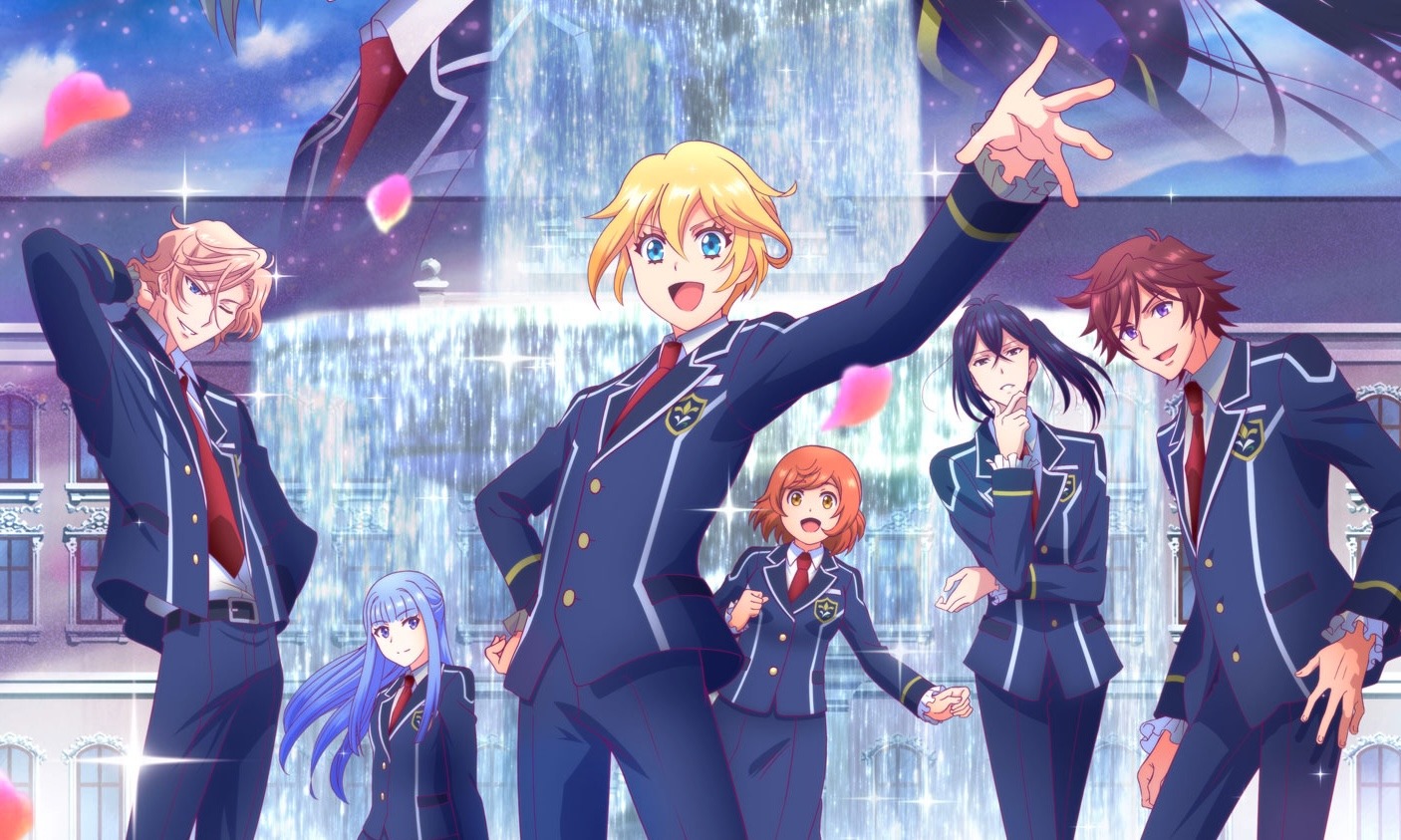
Lilia: Lilia is the game’s protagonist who captures Cedric’s heart. She initially appears sweet and innocent but has a complex and somewhat manipulative nature, driving the conflict with Aileen.
Supporting Characters: The series features a diverse cast of supporting characters, including Claude’s loyal subordinates and other noble figures, each contributing to the unfolding drama and Aileen’s quest to change her fate.
“I’m the Villainess, So I’m Taming the Final Boss” explores themes of self-determination, redemption, and challenging one’s destiny. The series provides a fresh take on the otome game genre by focusing on the “villainess” perspective, a character typically doomed to a tragic fate. Aileen’s proactive approach to her predicament and her determination to carve out a new future for herself form the crux of the narrative.
The romance between Aileen and Claude is central to the story, developing from an alliance of convenience into a genuine and heartfelt relationship. Their interactions are laced with humor, tension, and eventual mutual respect and affection. The series balances romantic elements with fantasy adventure and political intrigue, creating a well-rounded narrative.
Maho Film’s animation brings the vibrant world of the series to life, with a detailed and colorful art style that enhances the fantasy setting. Character designs are distinct and expressive, capturing the personalities and emotional nuances of the cast. The animation effectively portrays both the light-hearted and dramatic moments, ensuring an engaging visual experience.
The fantasy elements, including magic and demonic transformations, are well-animated, adding a dynamic layer to the storytelling. The settings, from lush royal palaces to dark, ominous forests, are depicted with attention to detail, immersing viewers in the rich world of the series.
The soundtrack of “I’m the Villainess, So I’m Taming the Final Boss” complements the series’ tone, with a mix of whimsical, romantic, and dramatic compositions. The opening theme “Kyokan Sarenakute mo Ii Janai” by Rie Takahashi and the ending theme “Nomic Hantou e” by ACCAMER are catchy and reflect the series’ energetic and emotional aspects.
The voice acting is a highlight, with notable performances by Rie Takahashi (Aileen) and Yuichiro Umehara (Claude). Takahashi captures Aileen’s determination, wit, and vulnerability, while Umehara brings a nuanced portrayal of Claude’s initially aloof but ultimately warm-hearted nature. The supporting cast also delivers strong performances, adding depth to the characters and story.
“I’m the Villainess, So I’m Taming the Final Boss” was well-received by both fans and critics for its innovative take on the isekai and otome game genres. It was praised for its strong character development, engaging plot, and the chemistry between the leads. The series’ humor, romance, and fantasy elements struck a chord with viewers, making it a standout in the crowded isekai genre.
The anime adaptation boosted the popularity of the original light novel series, leading to increased sales and readership. It also inspired various fan creations, including fan art and discussions, highlighting its impact on the anime community.
“I’m the Villainess, So I’m Taming the Final Boss” is a delightful and refreshing series that stands out for its unique premise, charming characters, and well-executed blend of romance and fantasy. Aileen’s journey to change her fate and her developing relationship with Claude provides a compelling narrative that keeps viewers invested.
Whether you’re a fan of isekai, romance, or fantasy adventures, this series offers a nice and enjoyable experience. Its positive messages of self-determination and redemption, combined with its engaging storytelling, ensure it remains a memorable and beloved addition to the genre.
6. Rent-A-Girlfriend
Rent-A-Girlfriend fully embraces the comedic potential of the pretend relationship trope, as the title suggests that these relationships are purely superficial (at least, they are supposed to be). Kazuya Kinoshita finds himself longing for companionship and envies Jirō’s situation, but his traditional school setting leads him to opt for a rental service instead.
Kazuya becomes infatuated with the beautiful Chizuru Mizuhara to the point where he introduces her to his family, blurring the lines between their business-only relationship and something more serious. As other attractive women start to show interest in Kazuya, he struggles to navigate the situation and finds himself entangled in multiple fake love affairs, all while wrestling with genuine emotions.
“Rent-A-Girlfriend” (Kanojo, Okarishimasu) is a Japanese romantic comedy anime series that has gained significant popularity since its debut.
The series is based on the manga written and illustrated by Reiji Miyajima, which began serialization in Kodansha’s Weekly Shōnen Magazine in July 2017. The anime adaptation, produced by TMS Entertainment, first aired in July 2020. Here’s a comprehensive review and detailed information about “Rent-A-Girlfriend”:
“Rent-A-Girlfriend” follows Kazuya Kinoshita, a 20-year-old college student who is heartbroken after being dumped by his girlfriend, Mami Nanami. Desperate for companionship and to soothe his loneliness, Kazuya resorts to a rental girlfriend service where he meets Chizuru Mizuhara, a beautiful and seemingly perfect girl who works as a rental girlfriend to support herself while attending college.
Kazuya’s initial encounter with Chizuru is filled with mixed feelings as he realizes that her affections are just part of the job. However, complications arise when Kazuya introduces Chizuru to his family and friends as his real girlfriend, leading to a series of misunderstandings and comedic situations. As they continue their charade, Kazuya and Chizuru develop a complex relationship that blurs the lines between business and genuine emotions.
Kazuya Kinoshita: Kazuya is the protagonist, a typical college student who struggles with self-esteem and romantic relationships. Despite his flaws and sometimes questionable decisions, he is sincere and caring. His journey throughout the series is marked by personal growth and his evolving feelings for Chizuru.
Chizuru Mizuhara: Chizuru is the main female lead, working as a rental girlfriend to support her acting ambitions. She is intelligent, kind, and determined, but she also has a no-nonsense attitude. Her professional demeanor as a rental girlfriend contrasts with her more genuine, vulnerable side that she gradually reveals to Kazuya.
Mami Nanami: Mami is Kazuya’s ex-girlfriend who dumped him at the beginning of the series. She appears sweet and innocent on the surface but harbors manipulative tendencies. Her continued interest in Kazuya’s life adds tension and complexity to the story.
Ruka Sarashina: Ruka is another rental girlfriend who becomes interested in Kazuya after discovering his relationship with Chizuru. She is energetic, straightforward, and determined to win Kazuya’s heart, adding a competitive dynamic to the relationships.
Sumi Sakurasawa: Sumi is a shy and inexperienced rental girlfriend introduced later in the series. Despite her introverted nature, she is earnest and hardworking, gradually becoming more confident through her interactions with Kazuya.

“Rent-A-Girlfriend” explores themes of loneliness, personal growth, and the complexities of modern relationships. The series goes into the emotional struggles of young adults as they navigate love, heartbreak, and self-discovery. Through Kazuya’s interactions with the various rental girlfriends, the story examines the nature of genuine connections versus transactional relationships.
The concept of rental girlfriends serves as a unique backdrop for exploring these themes. It highlights the idea of renting companionship in a society where real emotional bonds can be challenging to form. The series balances humor and drama, often using comedic situations to underscore deeper emotional truths about the characters.
TMS Entertainment’s animation brings “Rent-A-Girlfriend” to life with vibrant colors and expressive character designs. The animation quality is consistent, effectively capturing the comedic and dramatic moments of the series. Character expressions are particularly well-done, conveying a wide range of emotions that enhance the storytelling.
The art style is appealing, with a focus on making each character visually distinct and memorable. The settings, from bustling cityscapes to quieter, more intimate spaces, are detailed and contribute to the atmosphere of the series.
The soundtrack of “Rent-A-Girlfriend,” composed by Hyadain (Kenichi Maeyamada), complements the series’ tone with a mix of upbeat and emotional tracks. The opening theme “Centimeter” by the Peggies and the ending theme “Kokuhaku Bungee Jump” by halca are catchy and reflect the series’ romantic and energetic vibe.
The voice acting is a standout feature, with each actor bringing depth and personality to their characters. Shun Horie voices Kazuya with a mix of earnestness and vulnerability, while Sora Amamiya’s portrayal of Chizuru balances professionalism and genuine warmth. Aoi Yūki as Mami, Nao Tōyama as Ruka, and Rie Takahashi as Sumi also deliver strong performances, adding layers to their characters and enhancing the narrative.
“Rent-A-Girlfriend” has been well-received by both critics and audiences, praised for its engaging plot, character development, and unique premise. It has sparked discussions about modern dating, the nature of relationships, and the societal pressures faced by young adults. The series’ blend of humor, drama, and romance has resonated with a wide audience, contributing to its popularity.
The success of the anime has boosted the manga’s readership and inspired a variety of merchandise, including figures, apparel, and accessories. It has also led to the production of additional seasons, with the second season airing in 2022 and a third season announced.
“Rent-A-Girlfriend” is a compelling and entertaining series that offers a fresh take on the romantic comedy genre. Its exploration of modern relationships through the lens of rental girlfriends provides a unique and thought-provoking narrative. With its well-developed characters, engaging storyline, and high-quality animation, the series stands out as a must-watch for fans of romantic comedies and slice-of-life dramas.
The combination of humor, emotional depth, and relatable themes ensures that “Rent-A-Girlfriend” will continue to be a beloved series in the anime community. Whether you’re drawn to the quirky premise, the heartfelt moments, or the dynamic character interactions, “Rent-A-Girlfriend” delivers a memorable and enjoyable viewing experience.
5. Spy X Family
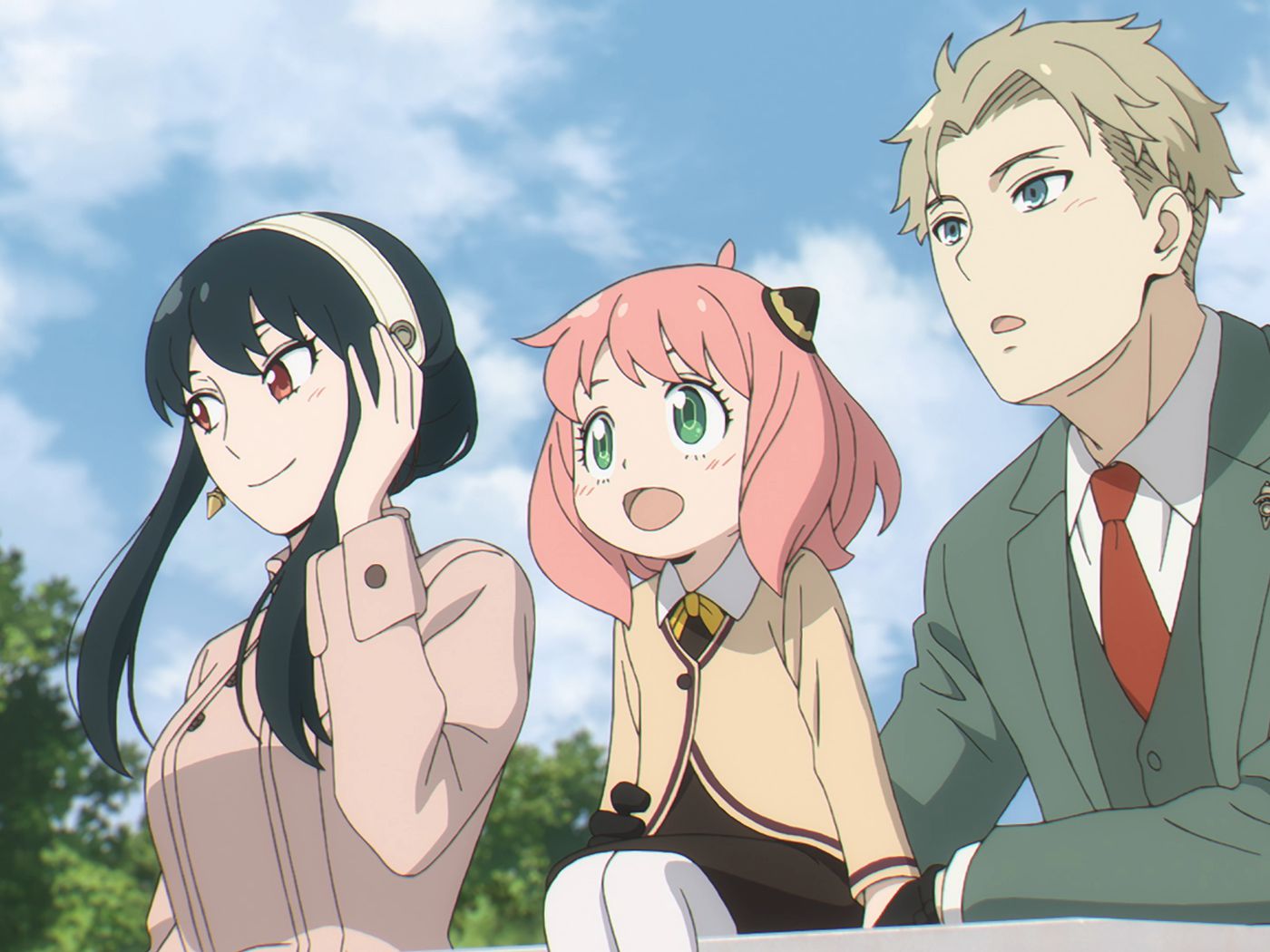
Jirō and Akari could learn a thing or two from Loid and Yor if they want to ace the Couples Training Program because when it comes to fictional marriages, these two spies take the prize. Loid is a secret agent striving to broker peace between East and West;
and he needs access to the prestigious Eden Academy (and thus, a wife and child) to accomplish his mission. Yor, on the other hand, is attracting too much attention as a single older woman, which could jeopardize her assassination plans. What better reason for an arranged marriage?
And if that’s not intriguing enough, enter the adorable Anya, who just happens to be telepathic and a bit of a troublemaker. The Forgers must navigate the complexities of playing a happy family while safeguarding their secrets, leading to some hilariously tangled situations.
“Spy x Family” is a Japanese manga series written and illustrated by Tatsuya Endo. It has been serialized biweekly on Shueisha’s Shonen Jump+ platform since March 2019, and the anime adaptation, produced by Wit Studio and CloverWorks, began airing in April 2022.

The series has quickly become a fan favorite due to its unique blend of action, comedy, and heartwarming family dynamics. Here’s a comprehensive review and detailed information about “Spy x Family”:
“Spy x Family” is set in a fictional, post-war, Cold War-esque world where tensions between the rival nations of Westalis and Ostania are high. The story centers around a top Westalian spy codenamed Twilight, who is assigned a crucial mission to maintain peace between the nations. To get close to his target, Donovan Desmond, a reclusive and influential political figure, Twilight must create a fake family as a cover.
Twilight, assuming the alias of Loid Forger, adopts a young orphan girl named Anya and marries a seemingly mild-mannered office worker named Yor Briar.
Unbeknownst to Loid, Yor is actually a highly skilled assassin known as Thorn Princess, and Anya is a telepath who can read minds. Despite their secrets, the three must act as a loving family to achieve their individual goals, leading to a series of comedic, action-packed, and heartwarming events.
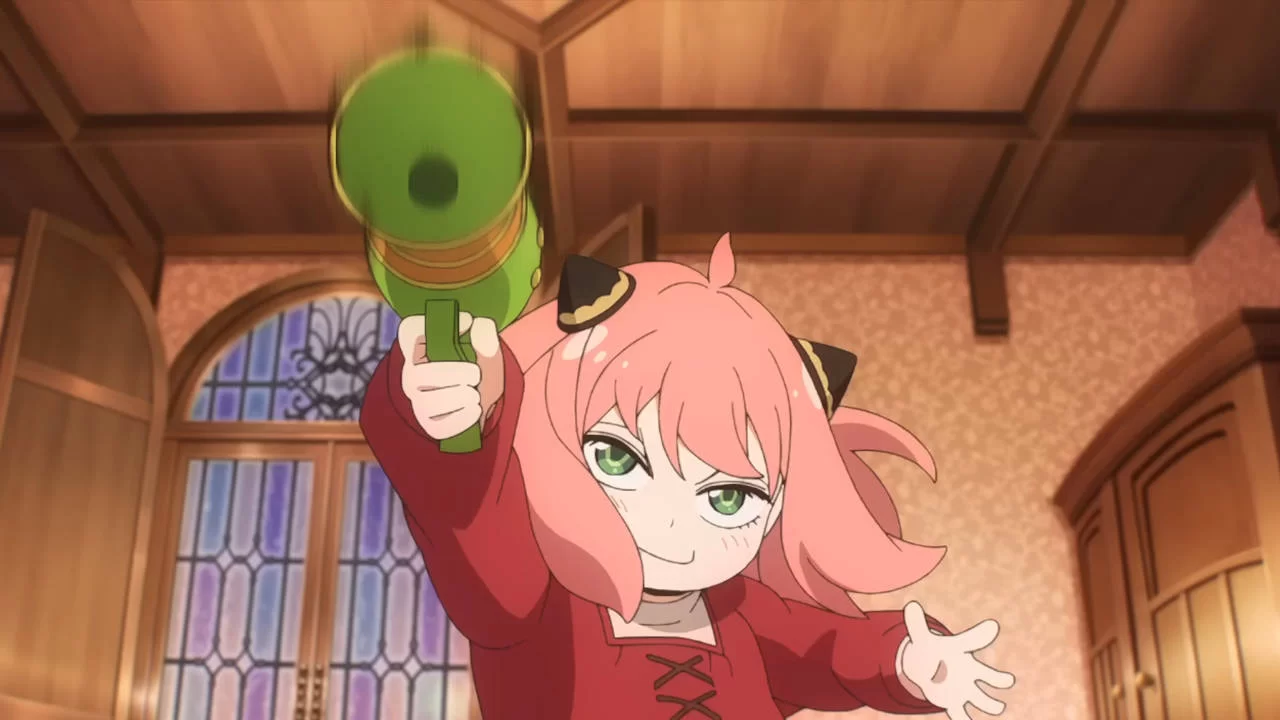
Loid Forger/Twilight: Loid is a master spy dedicated to his mission. As a highly skilled operative, he is proficient in combat, disguise, and various espionage techniques. Despite his professional demeanor, Loid gradually develops genuine care and concern for his new family, which challenges his strictly professional outlook on life.
Yor Forger/Thorn Princess: Yor is a seemingly meek and kind office worker who is secretly a deadly assassin. She excels in hand-to-hand combat and uses her skills to eliminate targets with precision. Yor’s dual life as a loving mother and a cold-blooded killer adds depth to her character, and her growing attachment to Loid and Anya highlights her softer side.
Anya Forger: Anya is a young girl with the ability to read minds, a result of mysterious experiments conducted on her in the past. Her innocent and playful nature, combined with her unique ability, often leads to humorous and poignant moments. Anya’s desire for a loving family drives much of the emotional core of the story.
Bond: Later in the series, the Forgers adopt a large white dog with precognitive abilities, whom they name Bond. His ability to see the future adds another layer of complexity and humor to the family’s adventures.
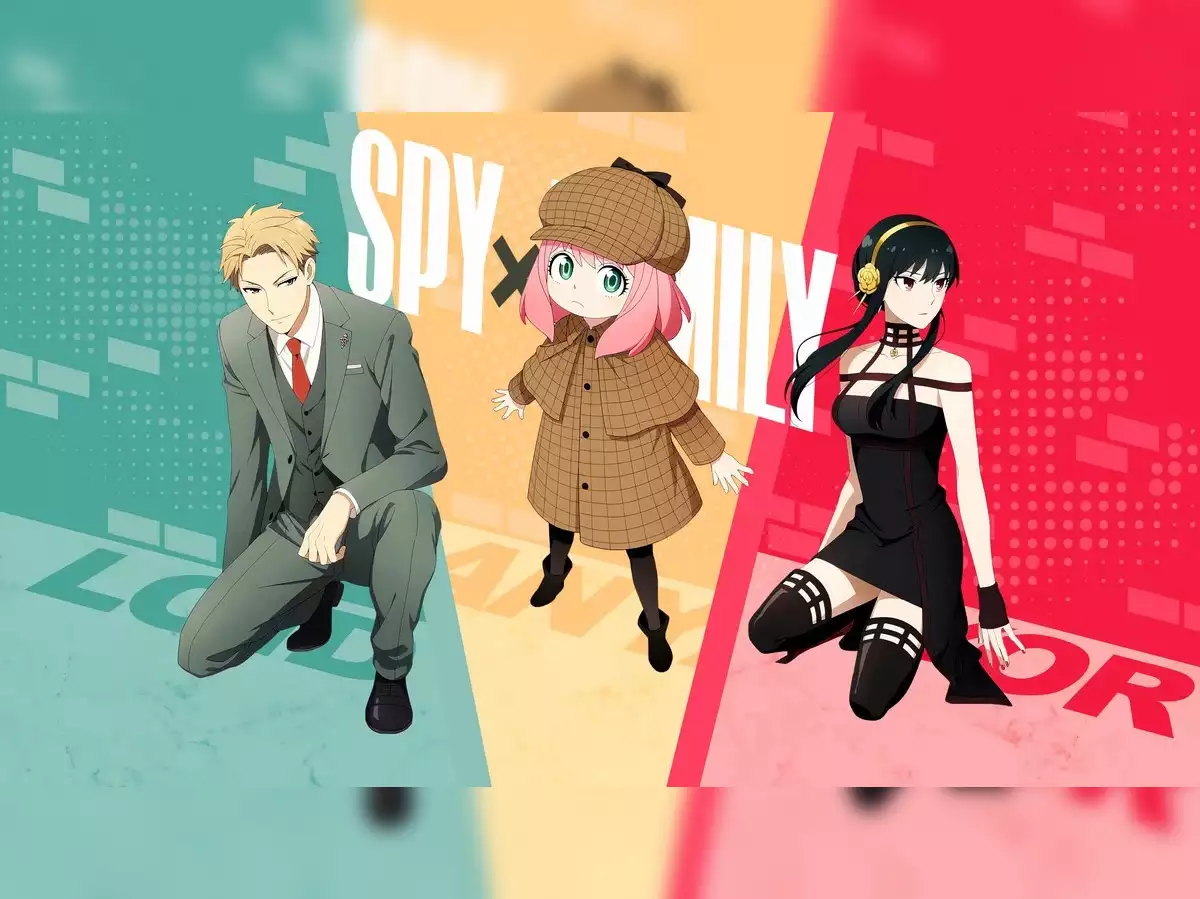
“Spy x Family” explores themes of identity, the importance of family, and the lengths individuals will go to achieve peace and protect those they care about. The series deftly balances its various elements, providing thrilling action sequences, laugh-out-loud comedy, and touching family moments.
The concept of a family composed of a spy, an assassin, and a telepath creates a unique dynamic. Each character must navigate their secret lives while striving to maintain the facade of a normal family. The series often highlights the contrast between their extraordinary abilities and their earnest attempts to fulfill ordinary familial roles, leading to both humorous and heartwarming situations.
The narrative structure allows for episodic adventures while building towards a larger overarching plot. This format keeps the story engaging and accessible, with each chapter or episode contributing to character development and the gradual deepening of the family’s bonds.
The anime adaptation by Wit Studio and CloverWorks brings the vibrant world of “Spy x Family” to life with high-quality animation. The character designs are faithful to Tatsuya Endo’s original artwork, capturing the distinct personalities and quirks of each character. The animation excels in both action sequences and comedic moments, seamlessly transitioning between intense spy missions and lighthearted family interactions.
The backgrounds and settings are meticulously detailed, reflecting the post-war, Cold War-inspired world with a blend of historical and modern elements. The use of color and lighting enhances the atmosphere, whether depicting the bustling cityscapes of Ostania or the cozy interior of the Forgers’ home.
The soundtrack of “Spy x Family,” composed by [K]NoW_NAME, complements the series’ tone with a mix of suspenseful, energetic, and heartfelt tracks. The opening theme “Mixed Nuts” by Official HIGE DANDism and the ending theme “Kigeki” by Gen Hoshino are particularly notable for their catchy melodies and reflective lyrics, capturing the essence of the series.

The voice acting is another highlight, with Takuya Eguchi voicing Loid, Saori Hayami as Yor, and Atsumi Tanezaki as Anya. Eguchi brings a perfect blend of seriousness and subtle humor to Loid’s character, while Hayami portrays Yor with a mix of kindness and deadly precision.
Tanezaki’s portrayal of Anya is endearing and expressive, capturing the innocence and mischief of the young telepath. The voice actors’ performances enhance the characters’ personalities and deepen the emotional impact of the story.
“Spy x Family” has been highly praised by both critics and audiences for its unique premise, engaging characters, and well-balanced storytelling. The series has been lauded for its ability to blend genres seamlessly, offering something for fans of action, comedy, and drama alike. It has quickly become one of the standout series in both manga and anime communities, earning a dedicated fanbase and critical acclaim.
The manga has sold millions of copies worldwide, and the anime adaptation has further boosted its popularity. Merchandise, fan art, and discussions about the series are widespread, reflecting its significant cultural impact.
“Spy x Family” is a remarkable series that stands out for its inventive premise, rich character development, and masterful blend of action, comedy, and heartfelt moments. The dynamic between Loid, Yor, and Anya creates a compelling narrative that explores the importance of family and the complexities of living double lives.
Whether you’re drawn to thrilling spy adventures, touching family stories, or lighthearted comedy, “Spy x Family” offers a unique and satisfying experience. Its strong storytelling, high-quality animation, and memorable characters ensure it remains a beloved and influential series in the anime and manga landscape. As the story continues to unfold, fans eagerly anticipate the further adventures and growth of the Forger family.
4. Classroom of the Elite
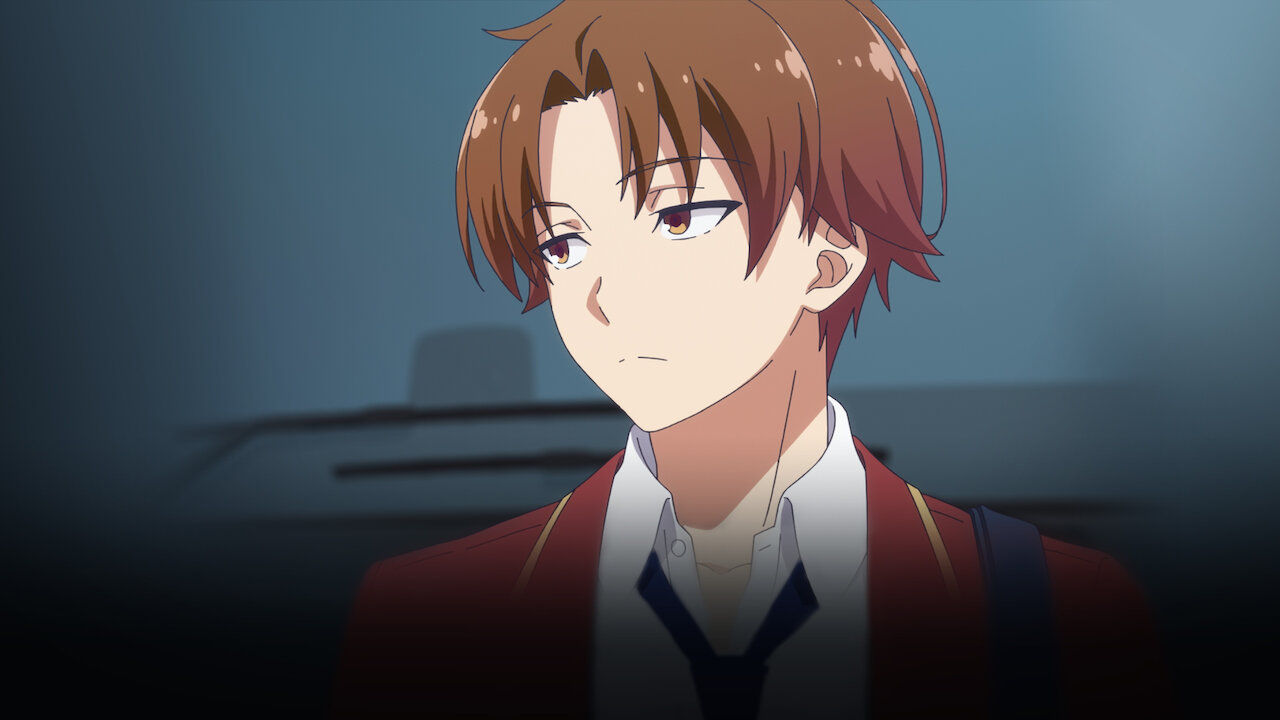
While More Than A Married Couple, But Not Lovers revolves around romantic comedy with a hefty dose of manipulation, Classroom of the Elite takes a darker turn with its themes of trickery and deceit.
Kiyotaka Ayanokouji, much like Jirō, finds himself in a mutually beneficial loveless relationship with the beautiful and popular Kei Karuizawa, which gradually evolves into something more profound. Ayanokouji, akin to Jirō, prefers solitude despite having a variety of attractive young women vying for his attention.
“Classroom of the Elite” (Youkoso Jitsuryoku Shijou Shugi no Kyoushitsu e) is a Japanese light novel series written by Syohgo Kinugasa and illustrated by Shunsaku Tomose. The series has also been adapted into manga and anime.
The anime adaptation, produced by Lerche, aired in 2017. “Classroom of the Elite” is renowned for its unique take on the school setting, its exploration of human nature and societal structures, and its compelling characters. Here’s a comprehensive review and detailed information about the series:
“Classroom of the Elite” is set in Koudo Ikusei Senior High School, an elite institution that prides itself on offering a top-tier education and preparing students for successful futures.
However, this prestigious school harbors a dark secret: the students are placed into classes based on their academic performance, and the hierarchy within these classes is strictly enforced. The story follows Class D, comprised of underperforming students who are often looked down upon by their peers.
The protagonist, Kiyotaka Ayanokouji, is a seemingly unremarkable student who is initially content to remain in the shadows. However, he soon becomes entangled in the intricate power struggles and schemes within his class.
Alongside his classmates, including the intelligent and ambitious Suzune Horikita and the carefree but perceptive Kikyou Kushida, Kiyotaka navigates the challenges of Koudo Ikusei and uncovers the truth behind the school’s facade.

Kiyotaka Ayanokouji: Kiyotaka is the enigmatic protagonist of the series. Despite his reserved demeanor and average academic performance, he possesses exceptional intelligence, physical abilities, and strategic acumen. Kiyotaka’s true motives and capabilities are shrouded in mystery, and his actions often serve to manipulate events from behind the scenes.
Suzune Horikita: Suzune is Kiyotaka’s classmate and the de facto leader of Class D. She is highly intelligent and driven by a desire to climb the school’s hierarchy and prove her worth. Suzune initially views Kiyotaka with suspicion but gradually forms a complex relationship with him as they work together to overcome various challenges.
Kikyou Kushida: Kikyou is a cheerful and sociable girl who befriends Kiyotaka and Suzune early in the series. She maintains a facade of friendliness and kindness, but beneath her cheerful exterior lies a manipulative and cunning personality. Kikyou’s true intentions and loyalties become increasingly ambiguous as the story progresses.
Other Classmates: The series features a diverse cast of supporting characters, each with their own motivations, ambitions, and secrets. From the ambitious and ruthless Ryuuen Kakeru to the stoic and mysterious Ichinose Honami, each character adds depth and complexity to the story, contributing to the intricate web of alliances and rivalries within the school.
“Classroom of the Elite” explores themes of social hierarchy, meritocracy, manipulation, and the nature of human ambition. The series offers a critical examination of the education system and societal structures, highlighting the flaws and injustices inherent in systems that prioritize academic achievement and competition.
The narrative is driven by intricate plot twists, psychological warfare, and strategic maneuvering, keeping viewers engaged and guessing as alliances shift and secrets are revealed. The morally ambiguous nature of many characters adds depth and complexity to the story, challenging viewers’ perceptions and inviting them to question the characters’ motives and actions.
Lerche’s animation in “Classroom of the Elite” is polished and visually appealing, with detailed character designs and fluid animation. The school campus and surrounding environments are depicted with a blend of realism and stylization, immersing viewers in the world of Koudo Ikusei Senior High School.
The animation effectively conveys the tension and drama of key scenes, whether depicting intense academic debates or dramatic confrontations between characters.
The soundtrack of “Classroom of the Elite,” composed by Ryo Takahashi, enhances the series’ atmosphere with a mix of suspenseful, melancholic, and dramatic tracks. The opening theme “Caste Room” by ZAQ and the ending theme “Beautiful Soldier” by Minami provide a fitting backdrop to the themes of the series, capturing the sense of intrigue and ambition that pervades the story.
The voice acting performances in the anime are commendable, with standout performances by Shouya Chiba as Kiyotaka, Akari Kitou as Suzune, and Yurika Kubo as Kikyou. The voice actors effectively convey the nuances of their characters’ personalities and emotions, adding depth and authenticity to their interactions.
“Classroom of the Elite” has garnered a dedicated fanbase and received positive reviews for its thought-provoking themes, complex characters, and suspenseful storytelling. While the anime adaptation covers only a portion of the light novel series, it has sparked increased interest in the source material and contributed to the series’ popularity both in Japan and internationally.
The series has inspired discussions and analyses among fans, particularly regarding its exploration of social commentary and human psychology. It has also led to various fan creations, including fan art, fan fiction, and discussions on online forums and social media platforms.
“Classroom of the Elite” is a nice and intellectually stimulating series that offers a fresh take on the school setting genre. Its intricate plot, morally complex characters, and thought-provoking themes make it a standout among its peers.
Whether you’re drawn to psychological drama, strategic intrigue, or social commentary, “Classroom of the Elite” offers a compelling and engaging viewing experience that is sure to leave a lasting impression.
3. Kaguya-sama: Love Is War
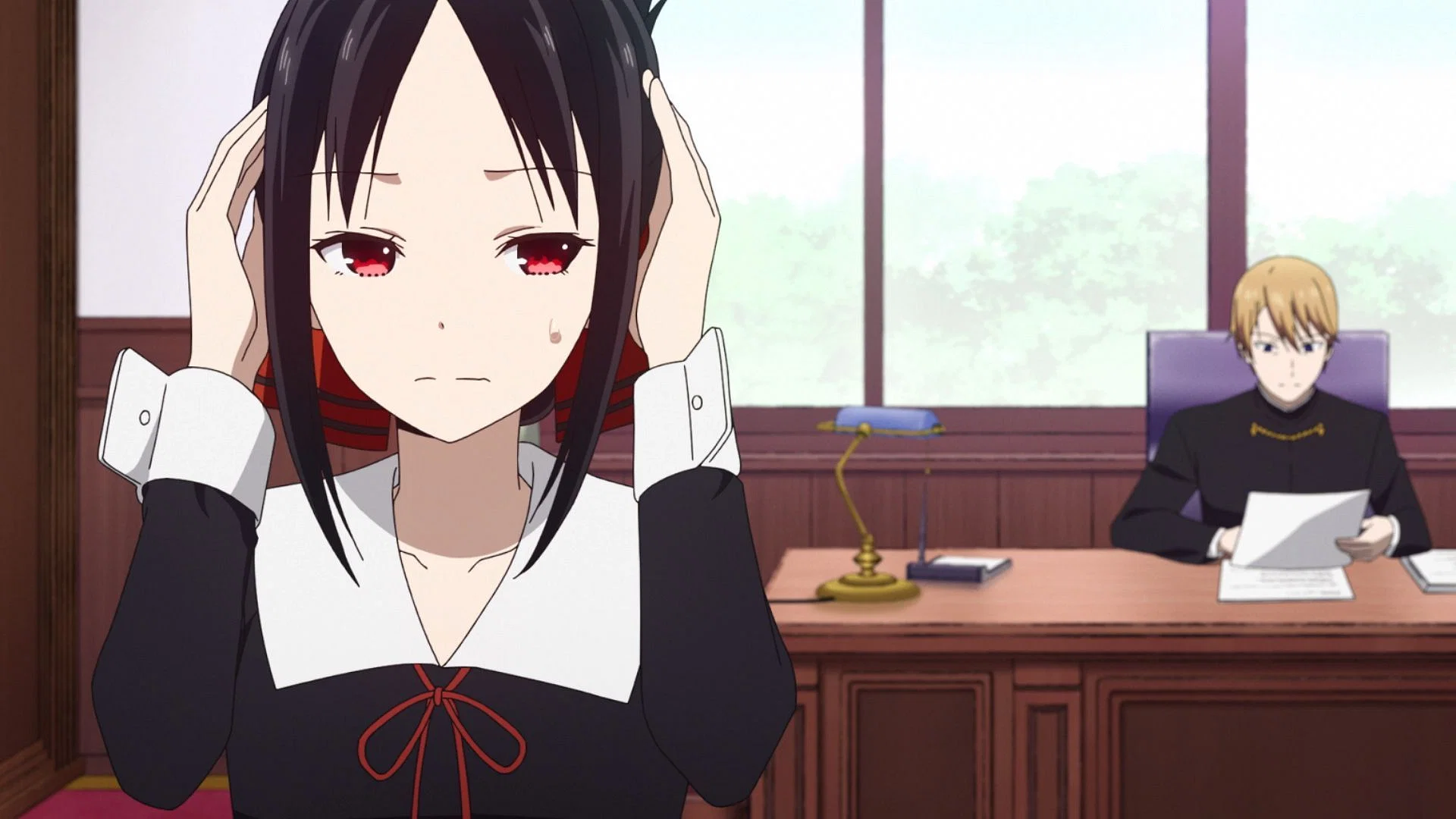
Playing the love game may just be part of a school program for Jirō and Akari; however, Miyuki and Kaguya take it to the next level in Kaguya-sama: Love Is War. Although initially repulsed by the idea of being a couple, the constant, close proximity begins to have an effect on them.
Neither of them wants to admit they may be developing feelings, and Miyuki and Kaguya find themselves in a similar predicament. With their genius-level intellects, the Student Council’s President and Vice-President attempt to outwit each other, engaging in a battle where the first one to confess their love is deemed the loser. The mix of manipulation and affection leads to hilariously entertaining results.
“Kaguya-sama: Love is War” (Kaguya-sama wa Kokurasetai: Tensai-tachi no Renai Zunousen) is a Japanese romantic comedy manga series written and illustrated by Aka Akasaka. It has been serialized in Shueisha’s Weekly Young Jump magazine since 2015 and has received widespread acclaim for its clever premise, witty humor, and charming characters.
The anime adaptation, produced by A-1 Pictures, aired in 2019 and has since garnered a dedicated fanbase. Here’s a comprehensive review and detailed information about “Kaguya-sama: Love is War”:
“Kaguya-sama: Love is War” revolves around the prestigious Shuchiin Academy, where two brilliant and prideful students, Kaguya Shinomiya and Miyuki Shirogane, serve as the president and vice-president, respectively, of the student council. Despite their mutual attraction to each other, both Kaguya and Miyuki are too proud to confess their feelings, believing that whoever confesses first will lose the psychological battle of love.
The series follows the hilarious and elaborate schemes devised by Kaguya and Miyuki as they attempt to trick each other into confessing their love. Their battles of wits range from plotting romantic strategies to outmaneuvering each other in various scenarios, all while navigating their roles as student council members and dealing with their eccentric classmates.
Kaguya Shinomiya: Kaguya is the beautiful and intelligent daughter of one of Japan’s wealthiest families. She is proud, calculating, and deeply infatuated with Miyuki but refuses to confess her feelings out of fear of appearing weak. Kaguya often employs elaborate schemes and mind games to try to manipulate Miyuki into making the first move.
Miyuki Shirogane: Miyuki is the diligent and hardworking student council vice-president. Despite his modest background, he excels academically and is admired by his peers. Miyuki is also in love with Kaguya but is equally determined to outwit her and make her confess first, believing it to be a matter of pride.
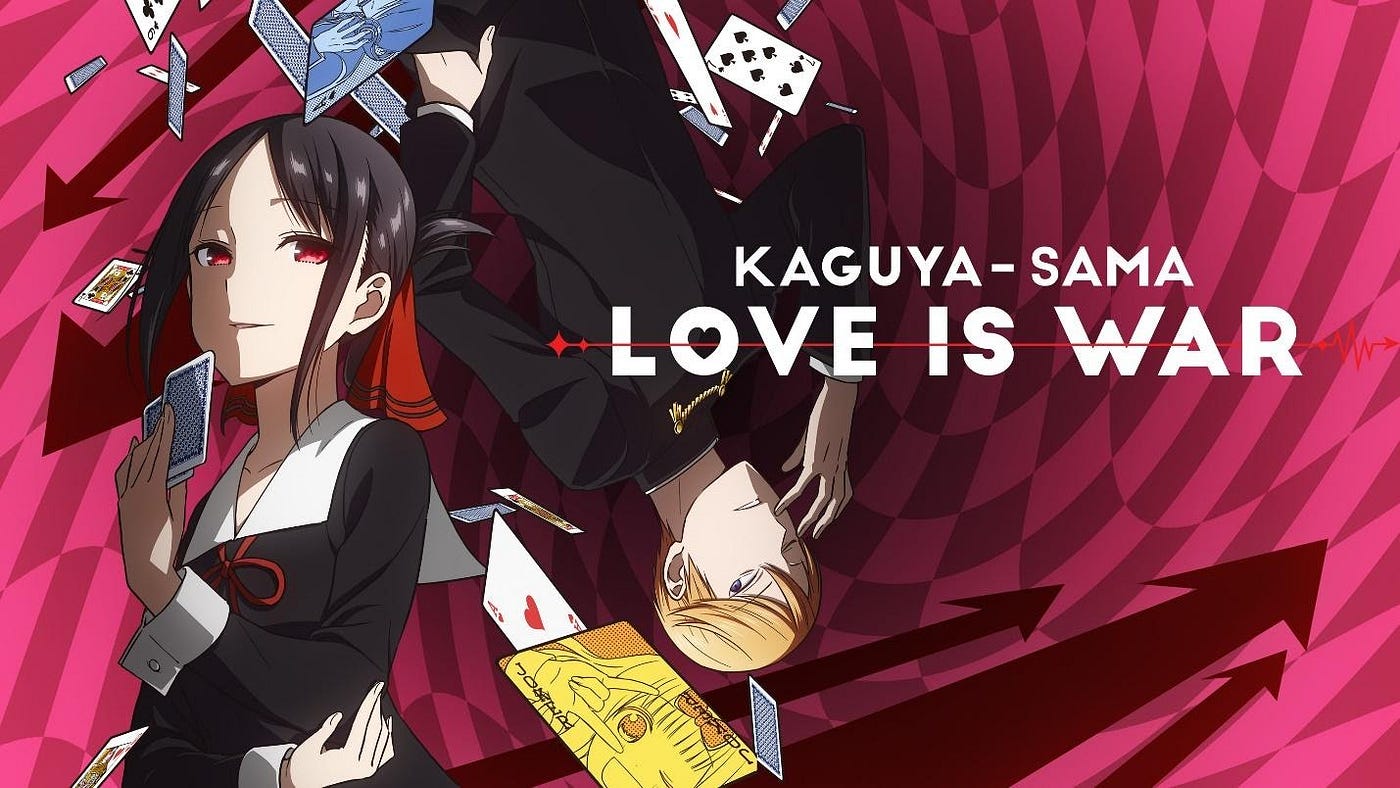
Chika Fujiwara: Chika is the cheerful and eccentric secretary of the student council. She is known for her carefree personality and love of fun, often unwittingly becoming involved in Kaguya and Miyuki’s schemes. Chika serves as a source of comic relief and occasionally provides unexpected insights into the dynamics of their relationship.
Yu Ishigami: Yu is the treasurer of the student council and a close friend of Miyuki. He is introverted, cynical, and often serves as the voice of reason amidst the chaos caused by Kaguya and Miyuki’s antics. Despite his gruff exterior, Yu is fiercely loyal to his friends and provides valuable support when needed.
“Kaguya-sama: Love is War” explores themes of pride, vulnerability, and the complexities of young love. The series cleverly subverts traditional romantic comedy tropes by focusing on the power struggle between Kaguya and Miyuki, who are both too stubborn to confess their feelings openly. The result is a delightful blend of romantic tension, witty banter, and slapstick humor that keeps viewers entertained throughout.
The execution of the series is masterful, with each episode featuring a series of vignettes that showcase different scenarios in which Kaguya and Miyuki attempt to outmaneuver each other. The writing is sharp and witty, with clever wordplay and visual gags that add to the comedic appeal. The pacing is brisk, ensuring that the humor never overstays its welcome and that each episode remains engaging from start to finish.
A-1 Pictures’ animation in “Kaguya-sama: Love is War” is vibrant and expressive, capturing the characters’ personalities and emotions with precision. The character designs are stylish and distinctive, with fluid animation that brings their expressions and movements to life. The art style is clean and polished, with attention to detail in both the character designs and the backgrounds.
The animation studio’s use of visual metaphors and creative editing techniques adds depth to the storytelling, enhancing the comedic timing and heightening the absurdity of certain scenes. Whether depicting intense psychological battles or lighthearted comedic moments, the animation remains consistently high-quality throughout the series.
The soundtrack of “Kaguya-sama: Love is War,” composed by Kei Haneoka, complements the series’ tone with a mix of playful, romantic, and dramatic tracks. The opening theme “Love Dramatic” by Masayuki Suzuki and Rikka Ihara and the ending theme “Sentimental Crisis” by halca capture the spirit of the series, with catchy melodies and catchy lyrics that reflect the characters’ inner turmoil and romantic tension.
The voice acting performances in the anime are superb, with standout performances by Aoi Koga as Kaguya, Makoto Furukawa as Miyuki, Konomi Kohara as Chika, and Ryouta Suzuki as Yu. The voice actors skillfully convey the characters’ personalities and emotions, adding depth and authenticity to their interactions.
“Kaguya-sama: Love is War” has received widespread acclaim from both critics and audiences, praised for its clever writing, charming characters, and hilarious comedy. The series has become a cultural phenomenon in Japan and internationally, spawning numerous spin-off manga, light novels, and merchandise. It has also inspired a dedicated fanbase and frequent discussions on social media platforms and online forums.
The anime adaptation has been particularly well-received, with its success leading to multiple seasons and OVAs. It has introduced the series to a wider audience and further cemented its status as one of the most beloved romantic comedies in recent years.
“Kaguya-sama: Love is War” is a delightful and inventive romantic comedy that offers a fresh take on the genre. Its clever premise, witty humor, and endearing characters make it a standout series that is sure to leave viewers laughing and rooting for Kaguya and Miyuki’s love story.
Whether you’re a fan of romantic comedies or simply enjoy sharp writing and memorable characters, “Kaguya-sama: Love is War” is a must-watch anime that is guaranteed to entertain and charm audiences of all ages.
2. Couple of Cuckoos
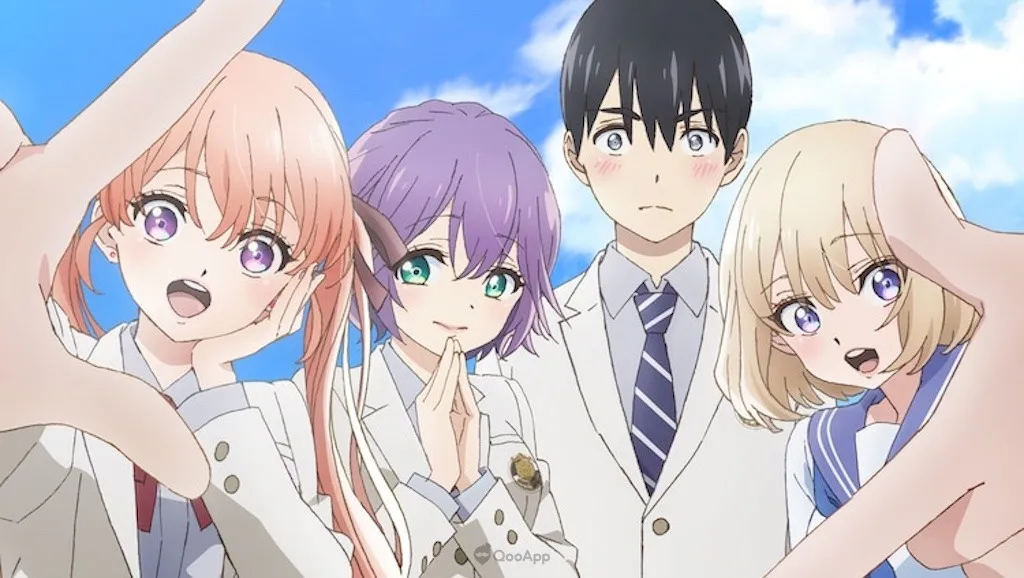
If Jirō and Akari think their predetermined relationship is complicated, well, they should meet Nagi and Erika from A Couple of Cuckoos. These two youngsters share a birthday and an uncannily similar surname, which caused them to be switched at birth and raised in the wrong household.
When the truth was finally discovered years later, their parents wanted the best of both worlds and decided to arrange a marriage between Nagi and Erika to keep things in the family.
Much like in Jirō and Akari’s case, there is little love in this involuntary setup, as Nagi’s heart already belongs to another. This does nothing to quell the parents’ wishes, and Nagi and Erika are forced to live in the same residence in preparation for married life.
“Kakkou no Iinazuke” (Couple of Cuckoos) is a Japanese romantic comedy manga series written and illustrated by Miki Yoshikawa. The series began serialization in Kodansha’s Weekly Shōnen Magazine in November 2018 and has since gained popularity for its endearing characters;
heartwarming romance, and humorous situations. An anime adaptation is scheduled to premiere in April 2022. Here’s a comprehensive review and detailed information about “Couple of Cuckoos”:
“Couple of Cuckoos” follows the unconventional relationship between Nagi Umino and Erika Amano, two individuals who discover that their parents made a marriage arrangement for them when they were born. Despite being complete strangers, Nagi and Erika are now bound by this unexpected betrothal and must navigate the challenges of living together as an engaged couple.
The series explores the comedic and heartwarming moments that arise as Nagi and Erika attempt to adjust to their new living arrangements and gradually develop feelings for each other. From awkward misunderstandings to genuine moments of connection, their relationship evolves as they learn more about each other and the circumstances that brought them together.
Nagi Umino: Nagi is a laid-back and easygoing high school student who discovers that he is engaged to Erika Amano, a girl he has never met. Despite initially feeling uncertain about their arranged marriage, Nagi is determined to make the best of the situation and approaches it with a positive attitude. He is caring, and compassionate, and often finds himself in amusing and awkward situations as he navigates his newfound relationship with Erika.
Erika Amano: Erika is a diligent and independent girl who takes her responsibilities as Nagi’s fiancée seriously. She is organized, practical, and initially approaches their arranged marriage with a no-nonsense attitude. However, as she spends more time with Nagi, she begins to develop feelings for him and reevaluates her perspective on love and relationships.
Supporting Characters: The series features a colorful cast of supporting characters, including Nagi and Erika’s families, friends, and classmates. From Nagi’s supportive younger sister to Erika’s overprotective older brother, each character contributes to the humor and drama of the story, adding depth and complexity to the narrative.

“Couple of Cuckoos” explores themes of love, family, and the unpredictability of relationships. The series challenges traditional notions of romance and marriage by presenting an unconventional premise in which two strangers are brought together through a prearranged betrothal.
Through Nagi and Erika’s interactions, the series examines the complexities of modern relationships and the importance of communication, trust, and mutual understanding.
The execution of the series is charming and lighthearted, with a perfect blend of humor, romance, and slice-of-life moments. The episodic format allows for a variety of comedic scenarios and heartfelt moments as Nagi and Erika navigate the ups and downs of their engagement. The writing is witty and engaging, with clever dialogue and relatable situations that keep viewers entertained and invested in the characters’ journey.
Miki Yoshikawa’s artwork in “Couple of Cuckoos” is clean, expressive, and full of personality. The character designs are distinct and memorable, with each character having their own unique appearance and mannerisms. The use of facial expressions and body language effectively conveys the characters’ emotions, adding depth and humor to their interactions.
The backgrounds are detailed and well-rendered, providing a vibrant backdrop for the series’ comedic and romantic moments. Whether depicting the bustling streets of Tokyo or the cozy interiors of Nagi and Erika’s home, the art style enhances the atmosphere of the story and immerses viewers in the world of the series.
“Couple of Cuckoos” has received positive reviews from both critics and audiences, praised for its charming characters, heartwarming romance, and humorous storytelling. The series has gained a dedicated fanbase and has been well-received in Japan and internationally. Its popularity has led to the announcement of an anime adaptation, generating further excitement among fans of the manga.
“Couple of Cuckoos” is a delightful romantic comedy that offers a fresh take on the genre with its unique premise and endearing characters. Its lighthearted humor, heartwarming romance, and relatable themes make it a joy to read and watch. Whether you’re a fan of romantic comedies or simply enjoy heartwarming stories about love and relationships, “Couple of Cuckoos” is sure to leave a lasting impression.
1. Horimiya
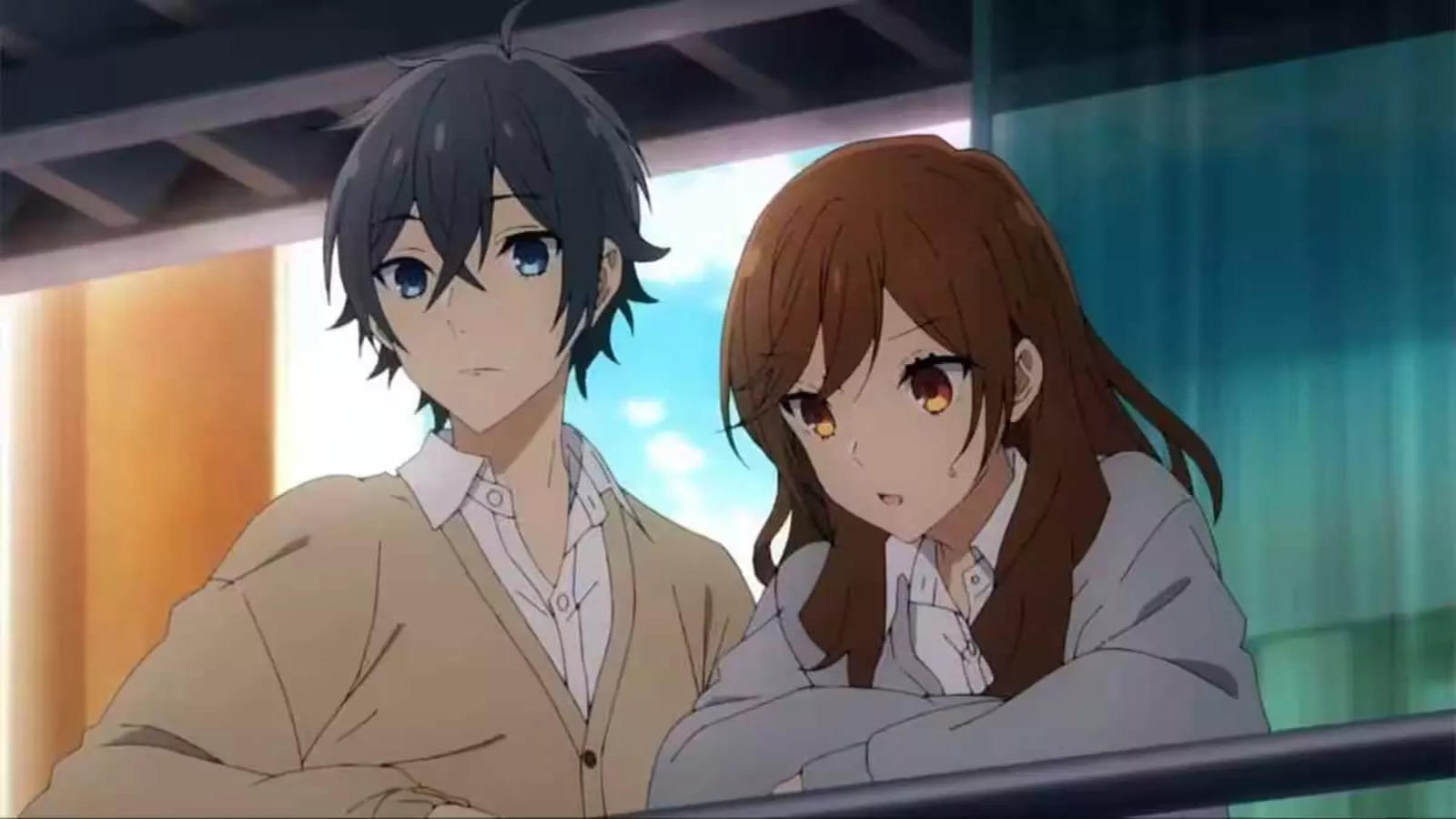
A beautiful story from strangers to soul mates, Horimiya is a must-watch for fans of romance and perfect matches. Izumi and Kyouko are on opposite sides of the planet until they meet by happenstance. Izumi shocks Kyouko with his streetwear attire, and she gets a good look at him for the first time.
One chance meeting turns into a journey filled with adventures that ultimately bring the two close together and, eventually, a couple.
The struggles both overcome as they look toward the future past high school and possibly into marriage make for a beautiful story about love and commitment. The fleshed-out characters and scenarios of Horimiya will greatly appeal to fans of More than a Married Couple, but not Lovers.
“Horimiya” is a Japanese manga series written by HERO and illustrated by Daisuke Hagiwara. Originally starting as a webcomic, it was later serialized in Monthly G Fantasy magazine in 2011.
The series quickly gained popularity for its endearing characters, heartfelt romance, and exploration of identity and self-acceptance. An anime adaptation was produced by CloverWorks and aired from January to March 2021. Here’s a detailed review and information about “Horimiya”:
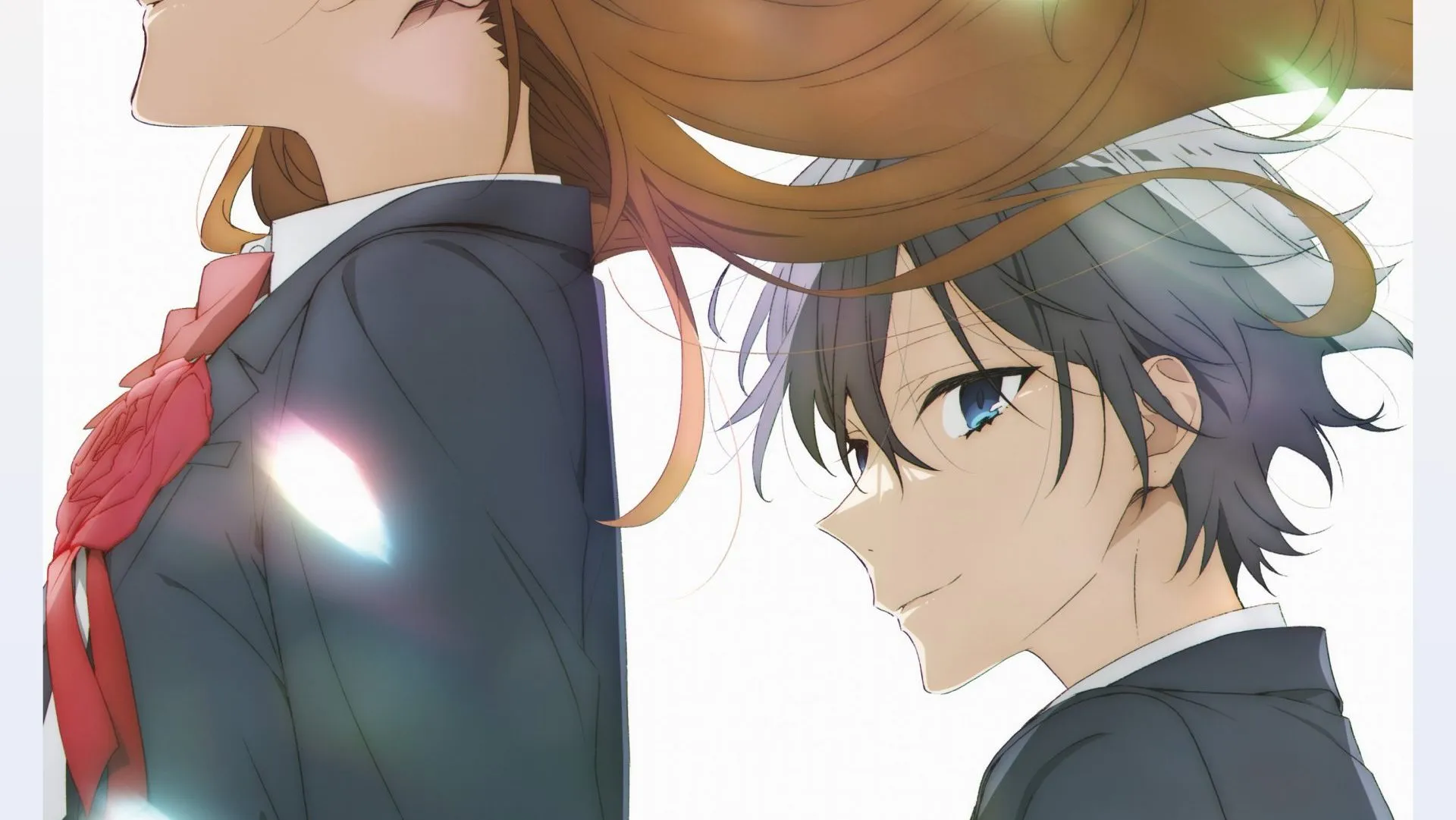
“Horimiya” follows the lives of two high school students, Kyouko Hori and Izumi Miyamura, who lead double lives. At school, Hori is popular, sociable, and known for her outgoing personality, while Miyamura is quiet, reserved, and often seen as an outsider.
However, outside of school, their true selves are revealed: Hori is a responsible older sister who cares for her younger brother, while Miyamura is a gentle and compassionate individual with piercings and tattoos.
The series explores the evolving relationship between Hori and Miyamura as they navigate the complexities of high school life, friendship, and romance. From their chance encounters to their growing feelings for each other, “Horimiya” goes into the ups and downs of their relationship, as well as the challenges they face in reconciling their public and private personas.
Kyouko Hori: Hori is the popular and outgoing protagonist of the series. Despite her cheerful demeanor at school, she is responsible for taking care of her younger brother and managing the household in her parents’ absence. Hori is depicted as kind-hearted, caring, and fiercely protective of her loved ones.
Izumi Miyamura: Miyamura is the quiet and reserved counterpart to Hori. He initially hides his true self at school, but as he becomes closer to Hori, he gradually reveals his piercings and tattoos. Miyamura is depicted as sensitive, empathetic, and deeply loyal to his friends, particularly Hori.

Supporting Characters: The series features a diverse cast of supporting characters, including Hori and Miyamura’s classmates, friends, and family members. From Hori’s energetic friend Yuki Yoshikawa to Miyamura’s childhood friend Toru Ishikawa, each character adds depth and complexity to the story, contributing to its richly woven narrative.
“Horimiya” explores themes of identity, self-acceptance, and the importance of genuine connections. The series subverts traditional romantic comedy tropes by focusing on the characters’ inner struggles and personal growth, rather than relying solely on romantic misunderstandings or comedic hijinks.
Through Hori and Miyamura’s relationship, the series highlights the transformative power of love and acceptance, as well as the significance of being true to oneself.
The execution of the series is both heartfelt and genuine, with a perfect balance of humor, drama, and romance. The episodic format allows for a variety of character-driven stories and heartfelt moments, while the overarching narrative maintains a sense of cohesion and progression. The writing is insightful and emotionally resonant, with relatable characters and realistic relationships that resonate with readers and viewers alike.

Daisuke Hagiwara’s artwork in “Horimiya” is beautifully rendered, with clean lines, expressive character designs, and detailed backgrounds. The characters are visually distinct and memorable, with their designs reflecting their personalities and emotions. The use of facial expressions and body language effectively conveys the characters’ feelings, adding depth and nuance to their interactions.
The art style complements the tone of the series, with warm and inviting colors that enhance the atmosphere. Whether depicting the bustling streets of Tokyo or the quiet moments between Hori and Miyamura, the artwork immerses readers and viewers in the world of the series, creating an engaging and visually appealing experience.
“Horimiya” has received widespread acclaim from both critics and audiences, praised for its engaging characters, heartfelt romance, and poignant storytelling. The manga has sold millions of copies worldwide and has been adapted into various media, including anime, light novels, and drama CDs.

The anime adaptation was particularly well-received, with its faithful adaptation of the source material and high-quality animation earning praise from fans and newcomers alike.
The series has also had a significant impact on popular culture, inspiring fan art, merchandise, and discussions on social media platforms and online forums. Its positive portrayal of diverse characters and themes of acceptance and friendship have resonated with audiences of all ages, making it a beloved and enduring series in the romantic comedy genre.
“Horimiya” is a heartfelt and beautifully crafted series that offers a refreshing take on the romantic comedy genre. Its endearing characters, genuine relationships, and insightful themes make it a standout among its peers, earning it a dedicated fanbase and critical acclaim. Whether you’re a fan of romance, comedy, or slice-of-life stories, “Horimiya” is sure to capture your heart and leave a lasting impression.
As they spend more time together outside of school, Hori and Miyamura form a close bond, realizing that they have more in common than they initially thought. Along the way, they navigate the ups and downs of high school life, overcoming obstacles, making new friends, and discovering the true meaning of love and friendship.
“Horimiya” stands out for its endearing characters, genuine emotions, and realistic portrayal of teenage relationships. The series beautifully explores themes of self-discovery, acceptance, and the importance of being true to oneself. With its charming storytelling, relatable characters, and delightful humor, “Horimiya” is a must-watch anime that will leave viewers smiling and rooting for its lovable protagonists until the very end.
Memes of the Day
Go Ahead Mom
GANGBANG & PUNISHER
Thirty sai ni naru shojo no ane wa Asetteiru
Its a pixiv artworks manga to watch search – Pixiv 119092056
Talentless Nana
Sauce: 191325
Zutto Tomodachi | Friends Forever [Pija]
[Chinpan-bu (Chinpan)] Niizuma Joushi wa Buka no Chinpo de Do-M Ochi


